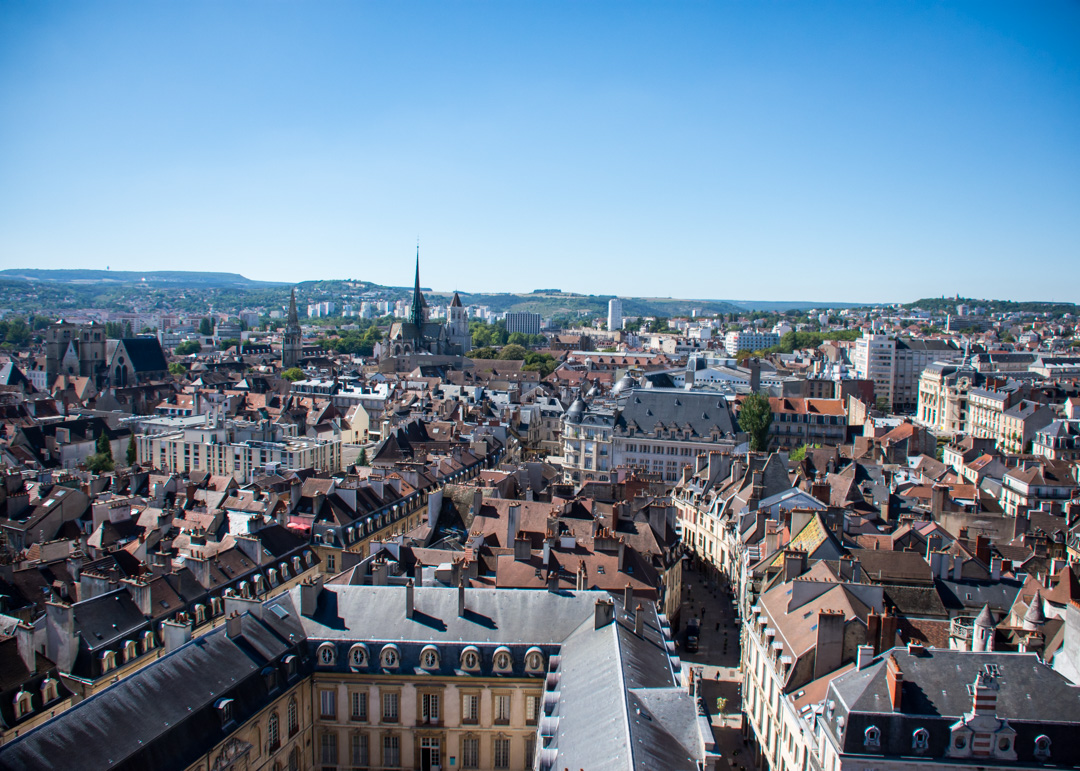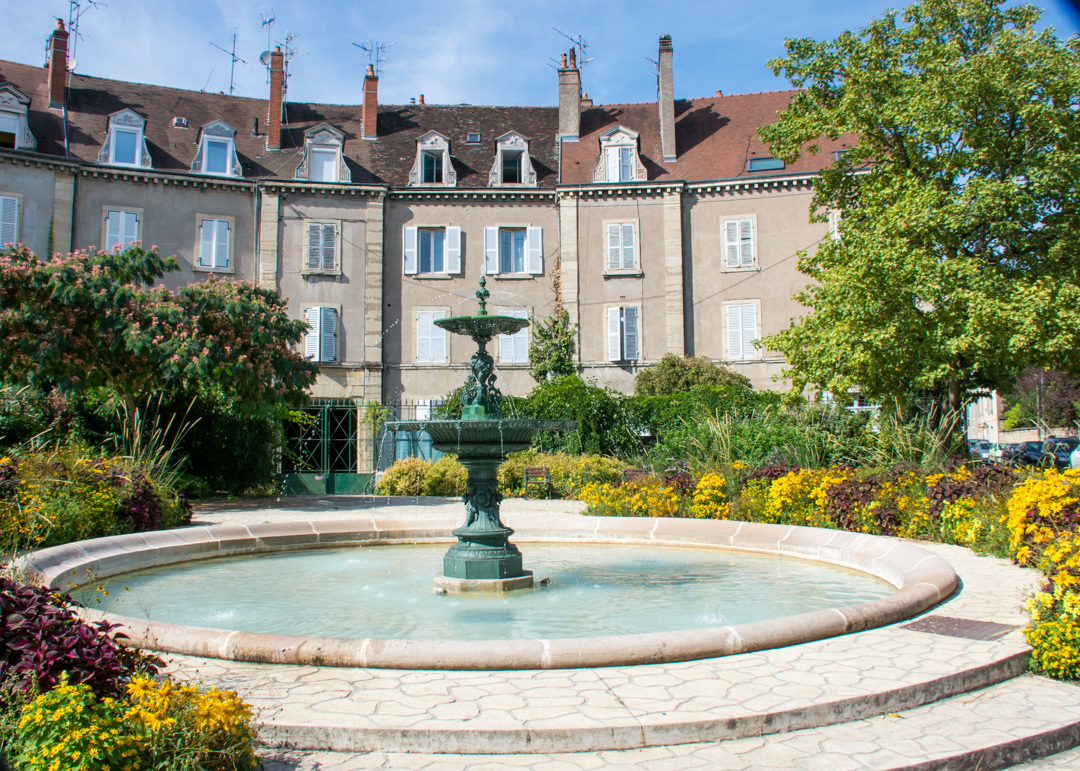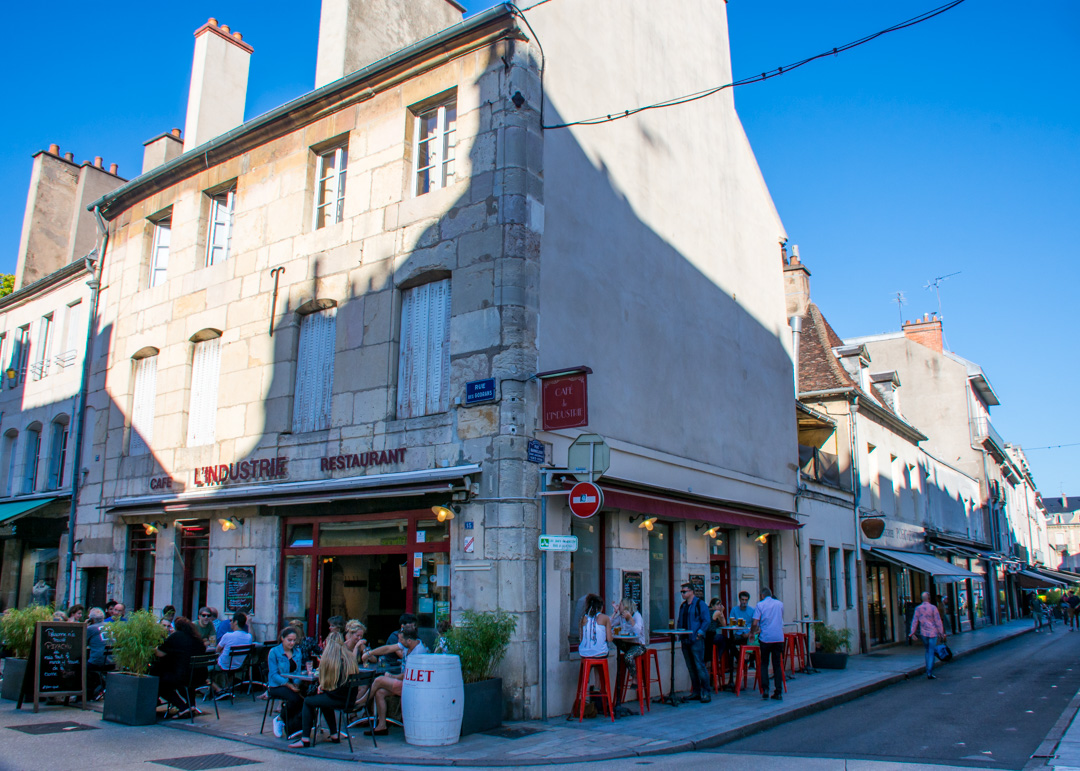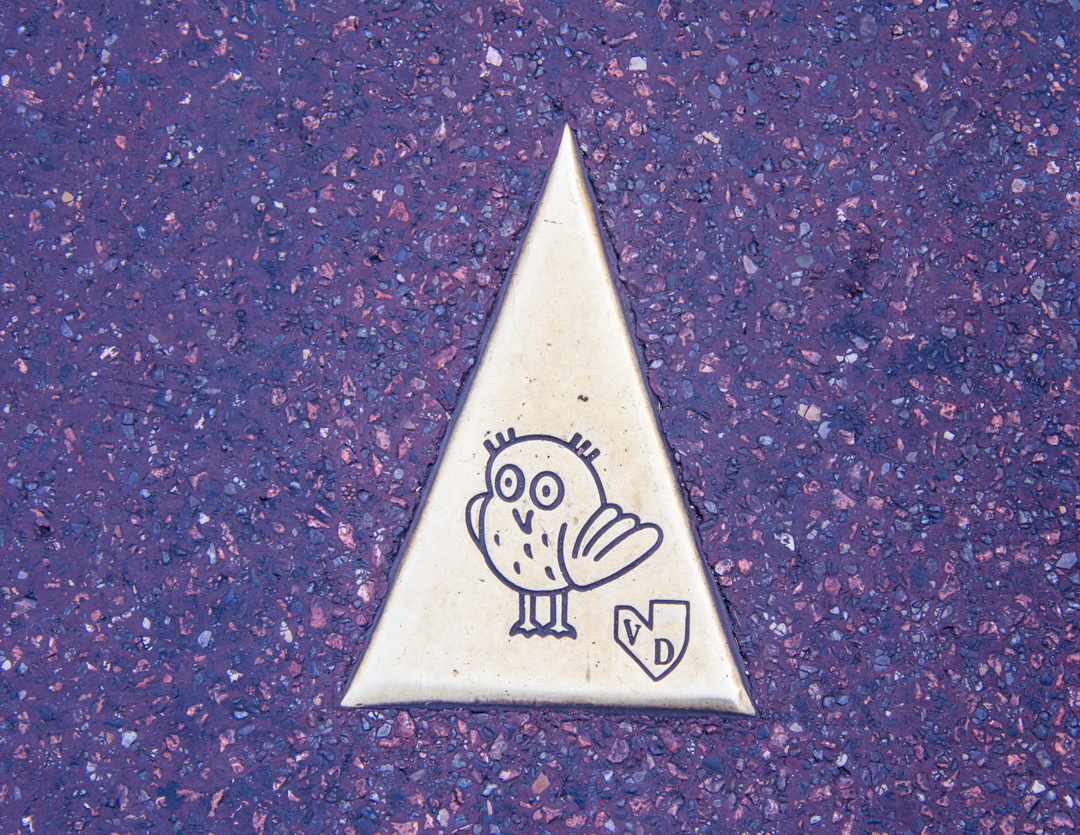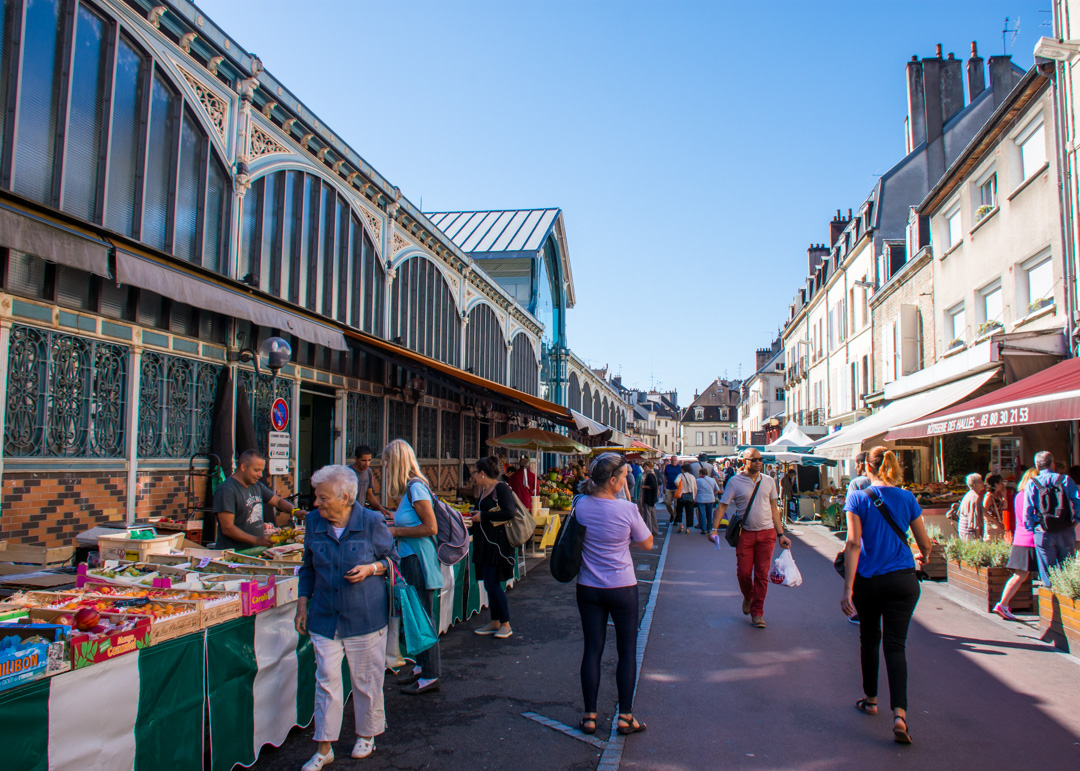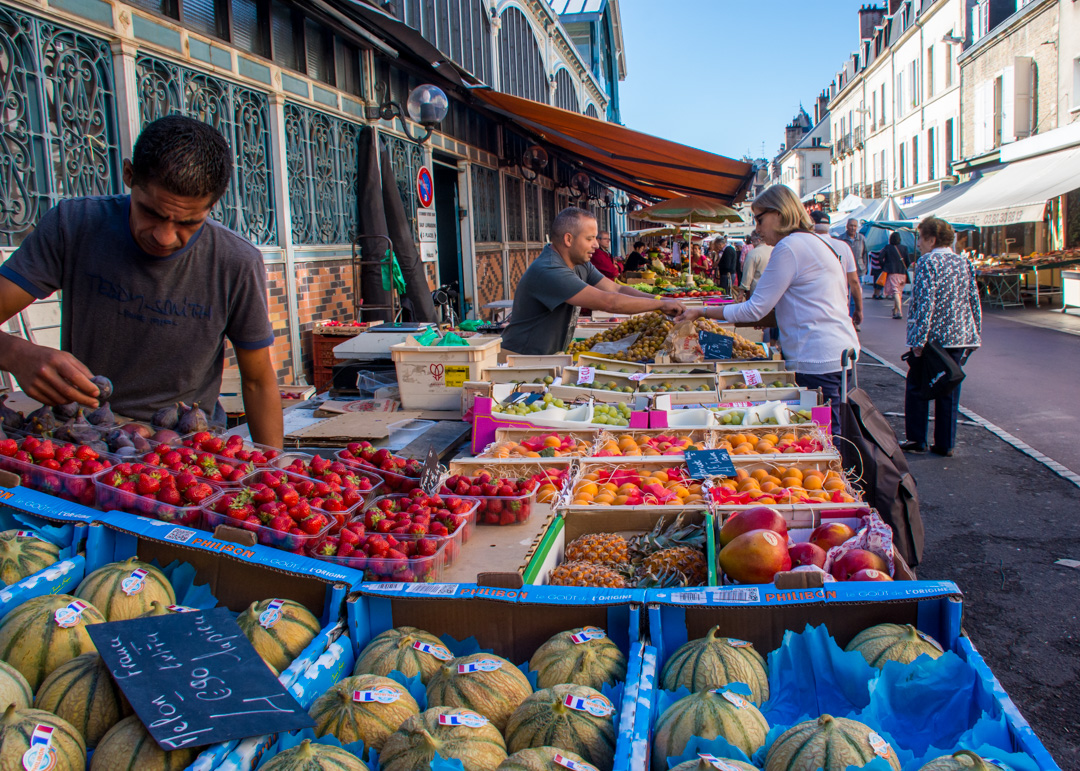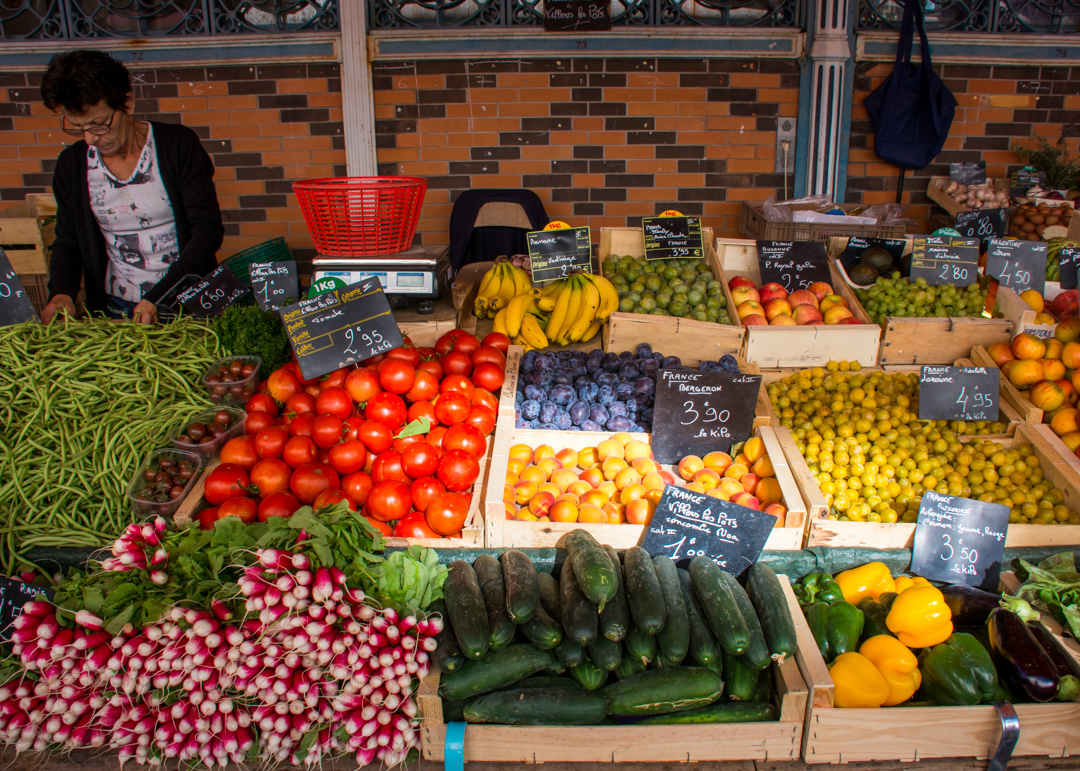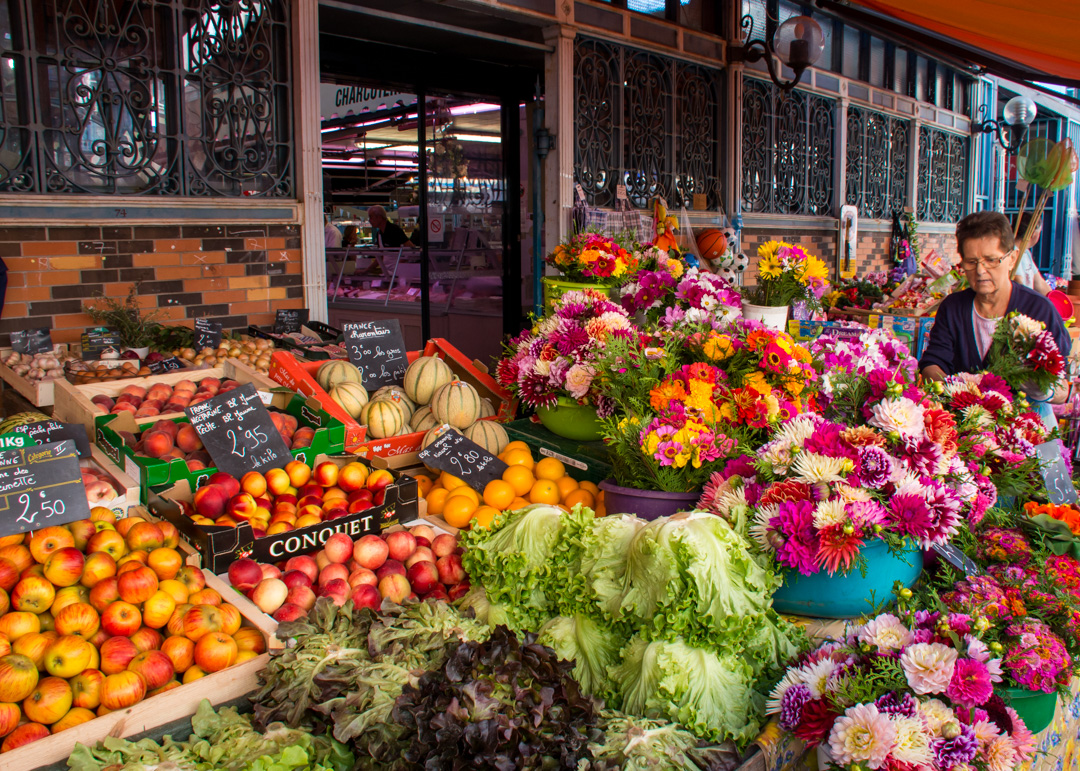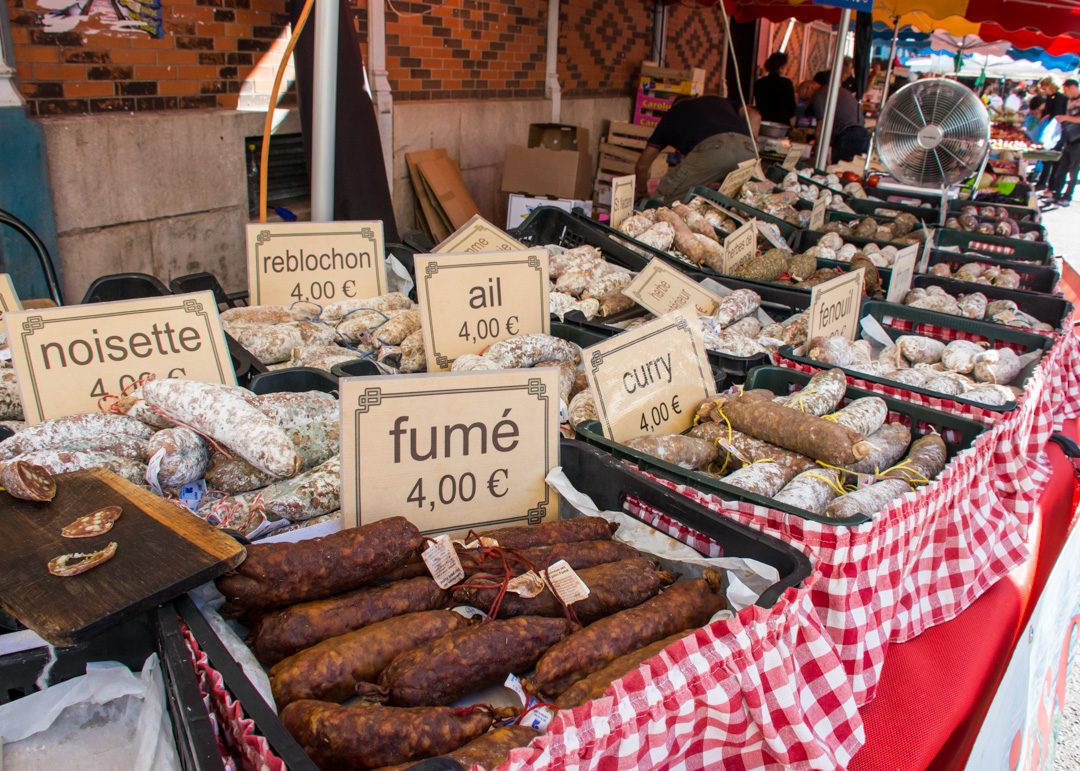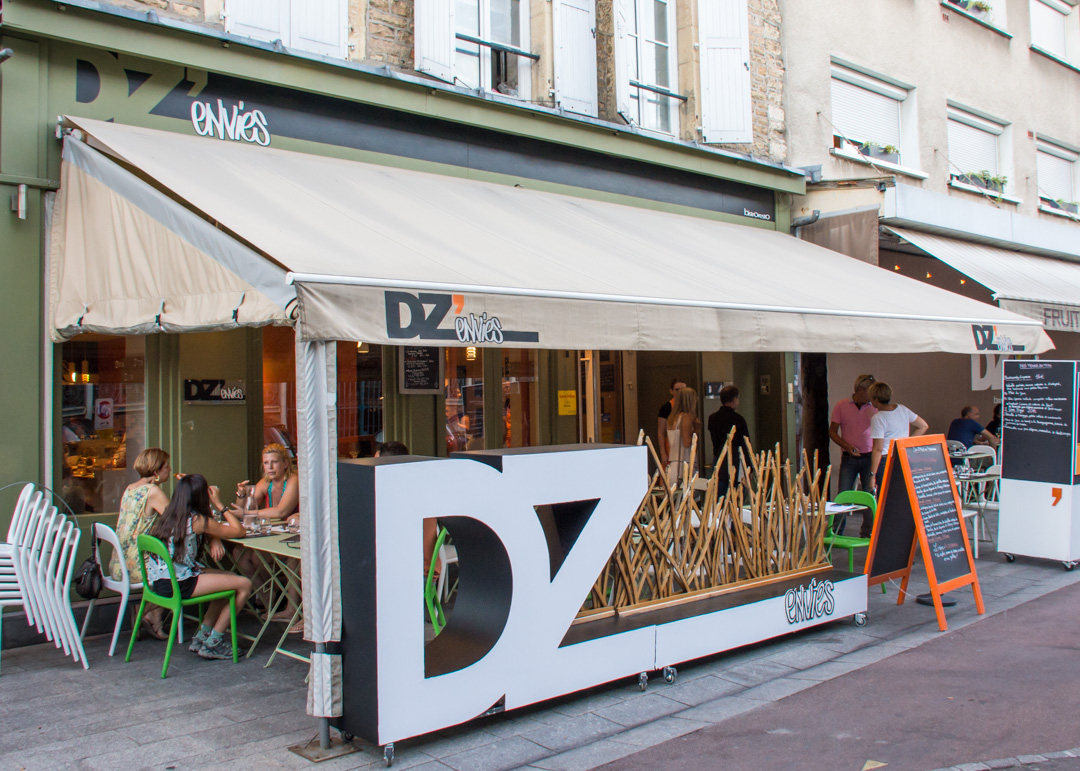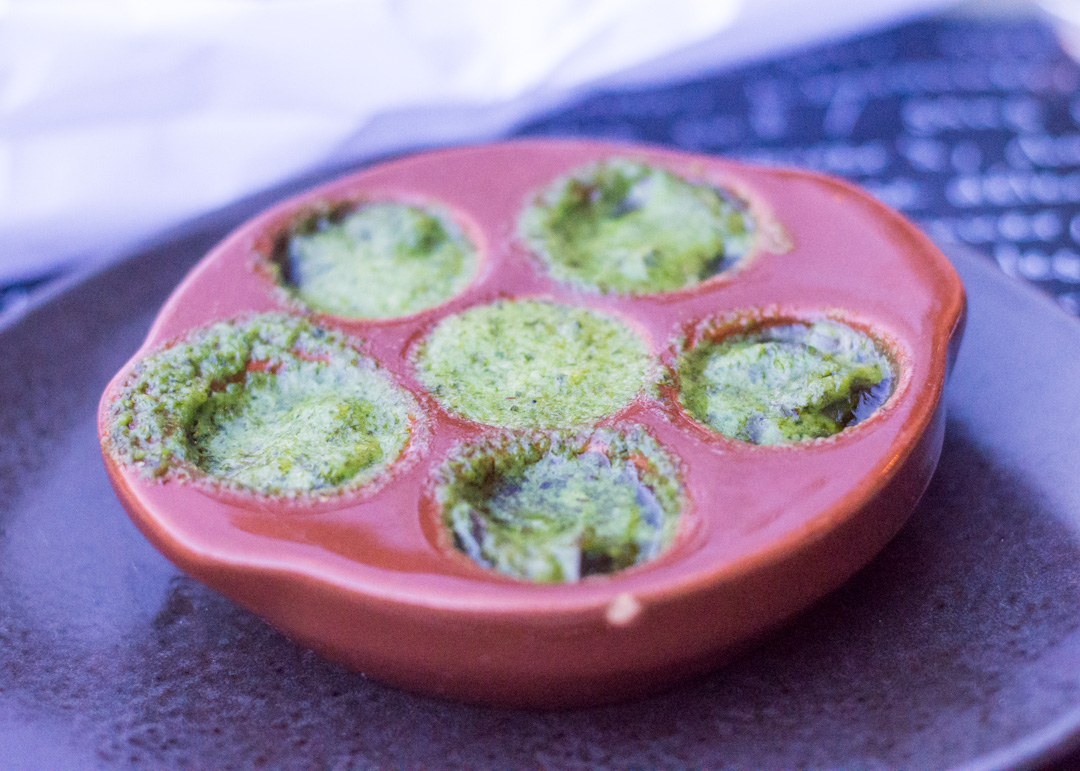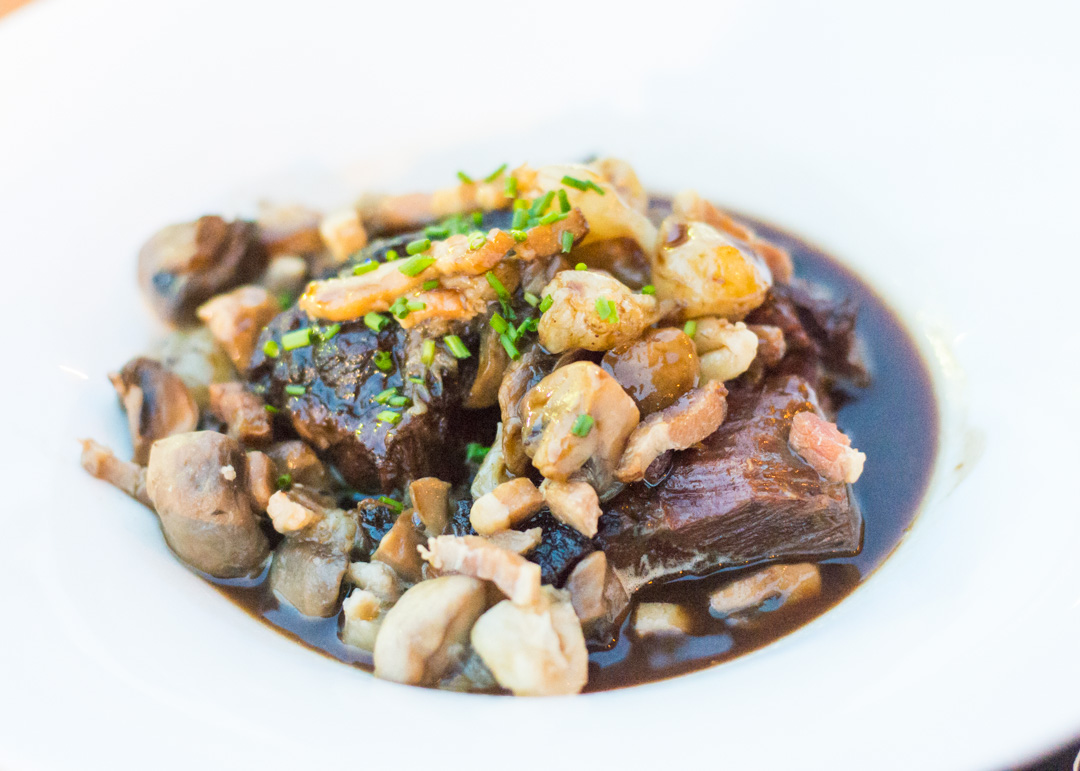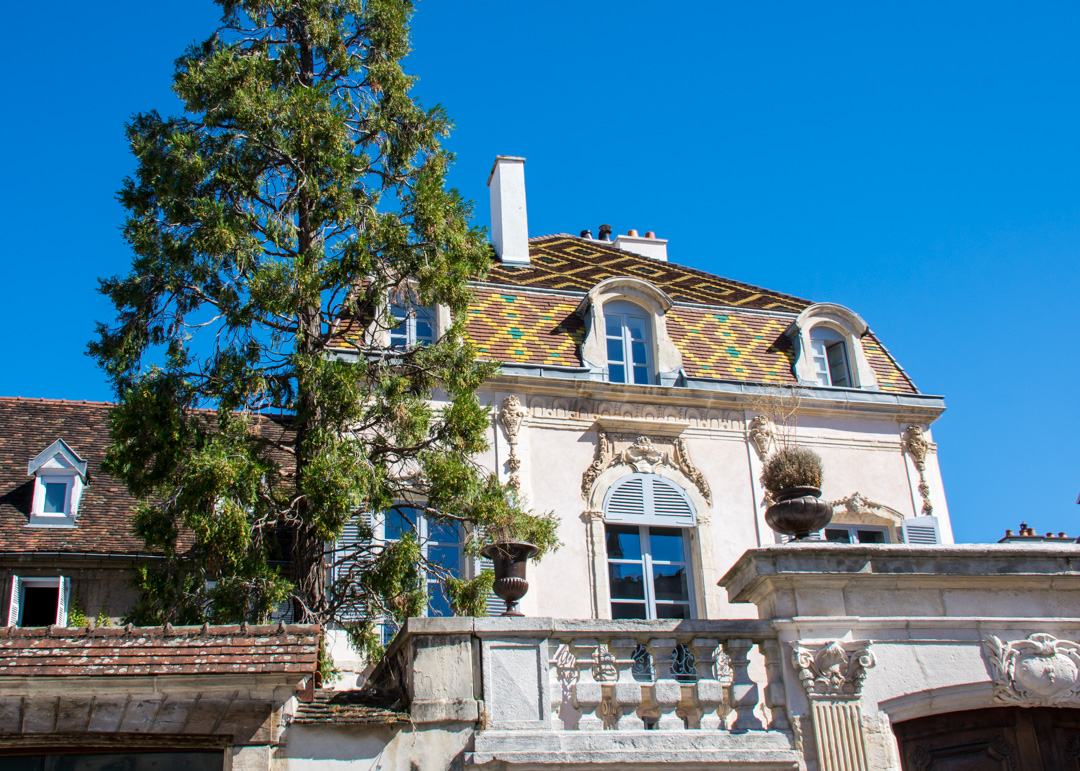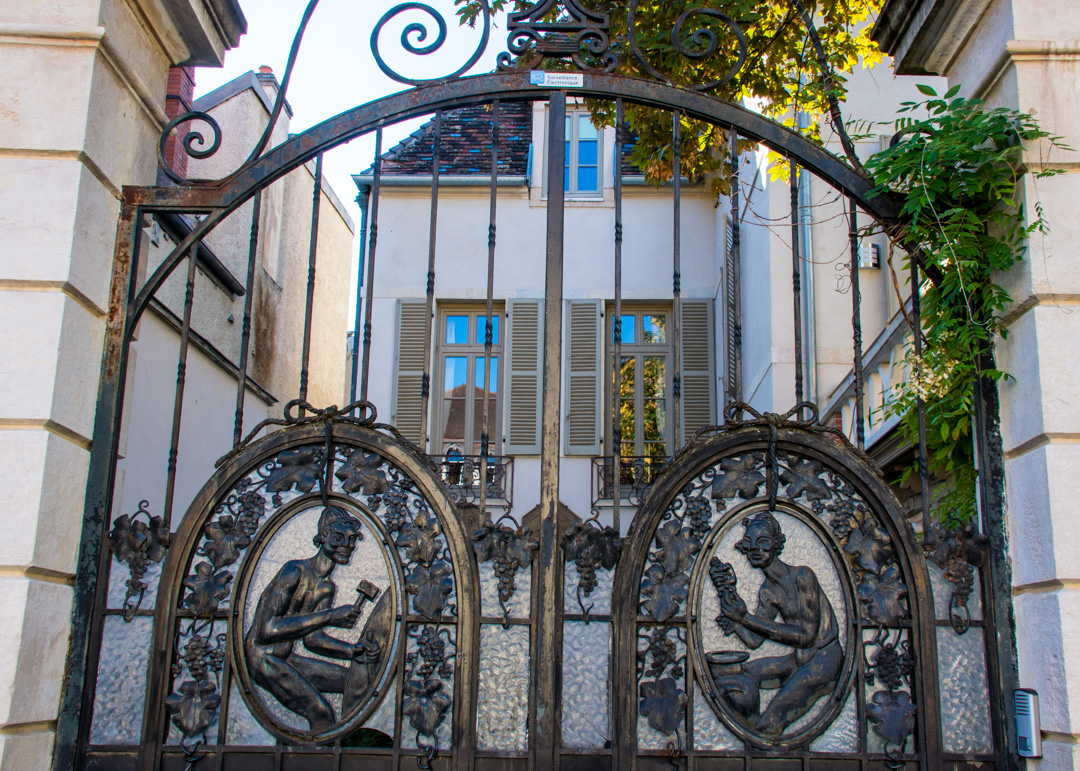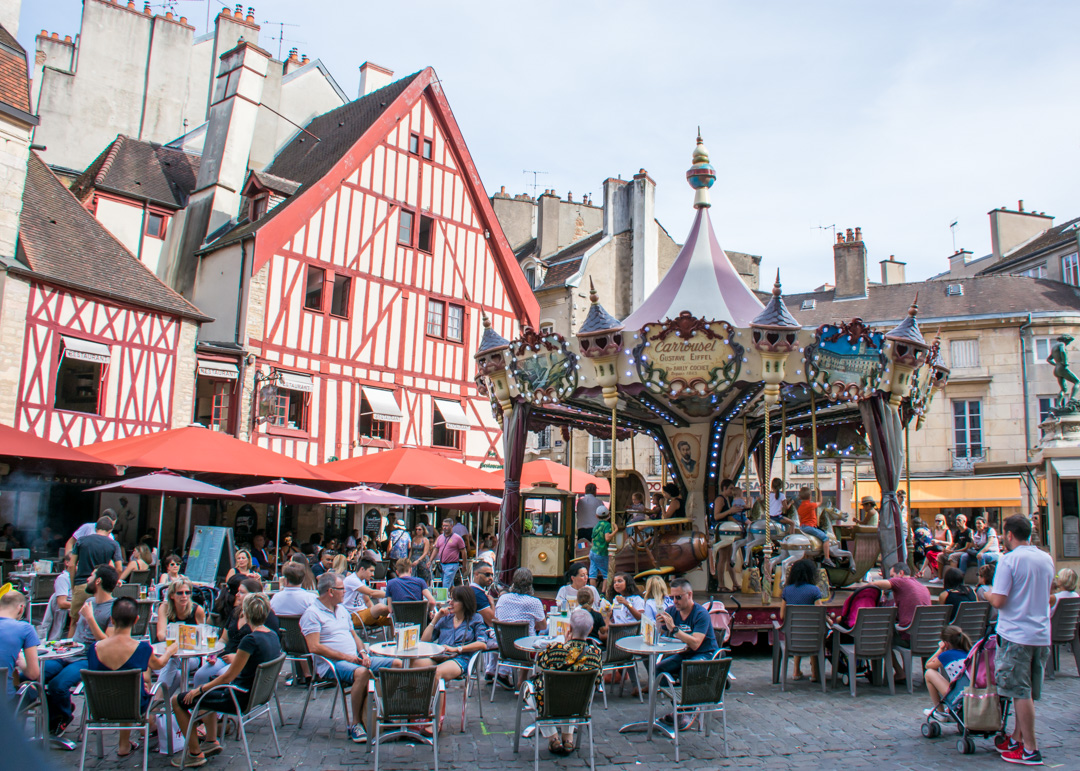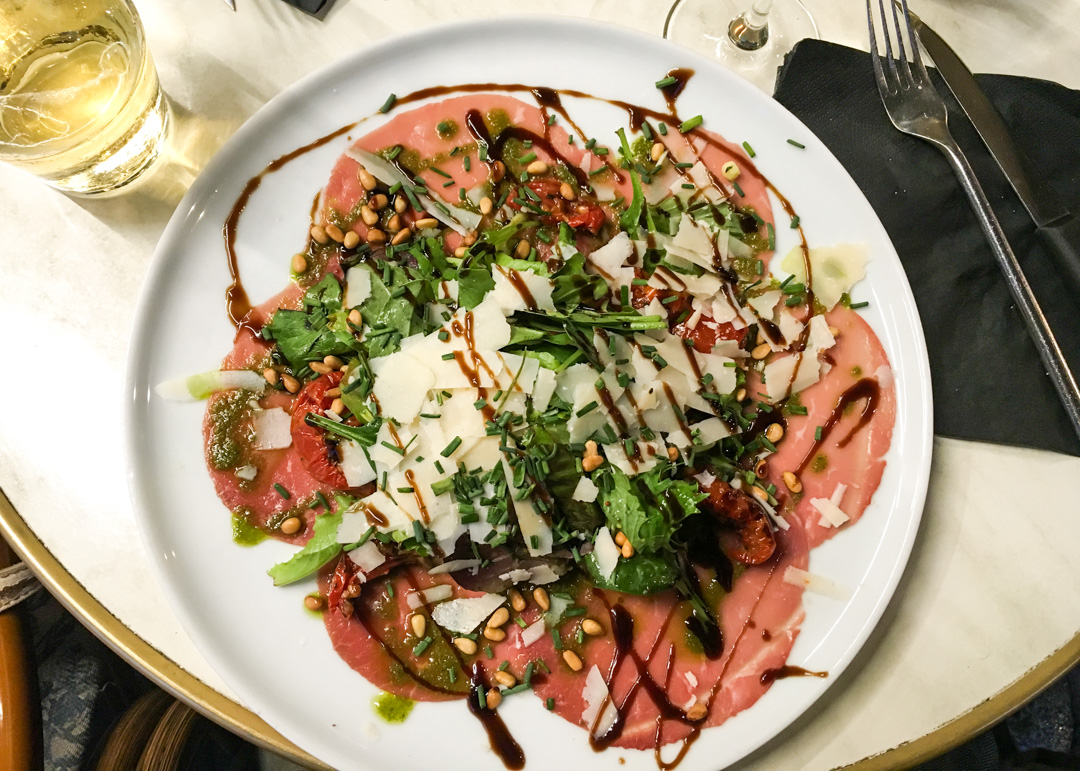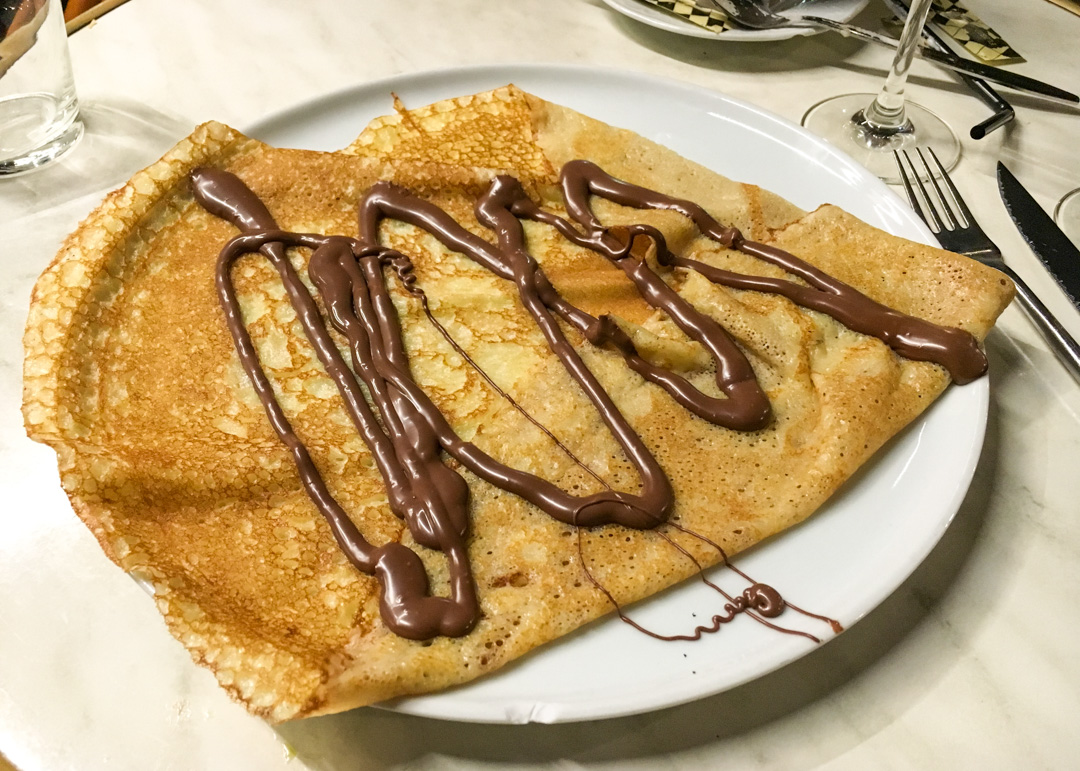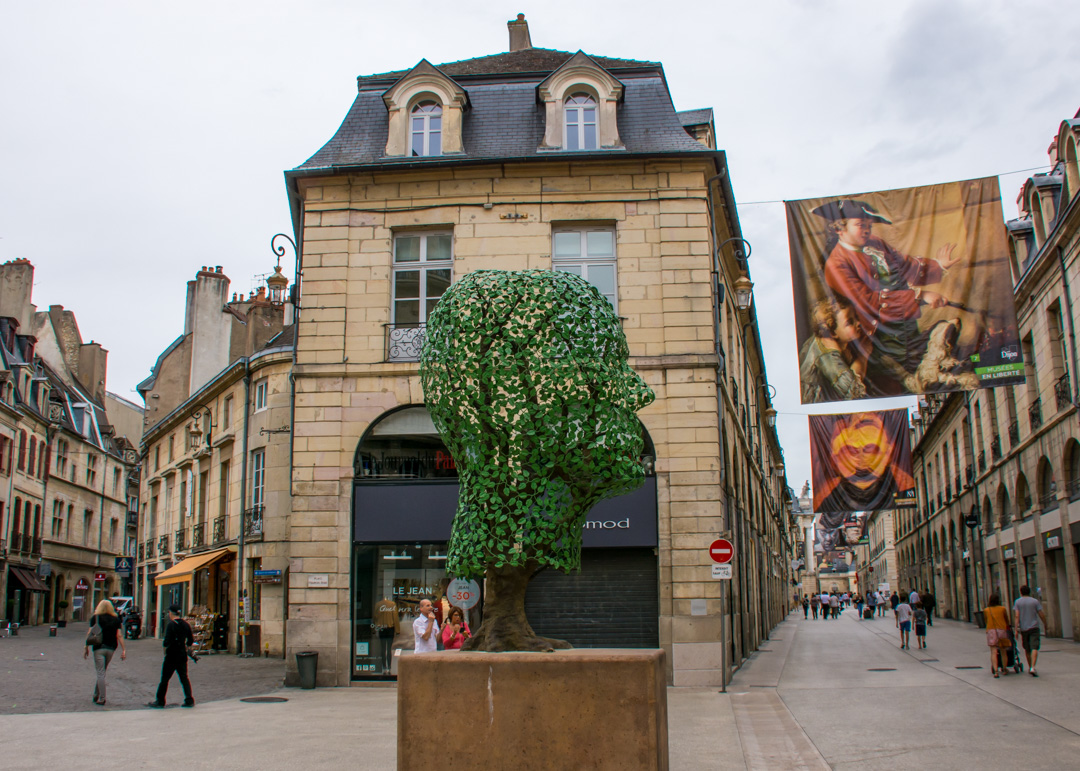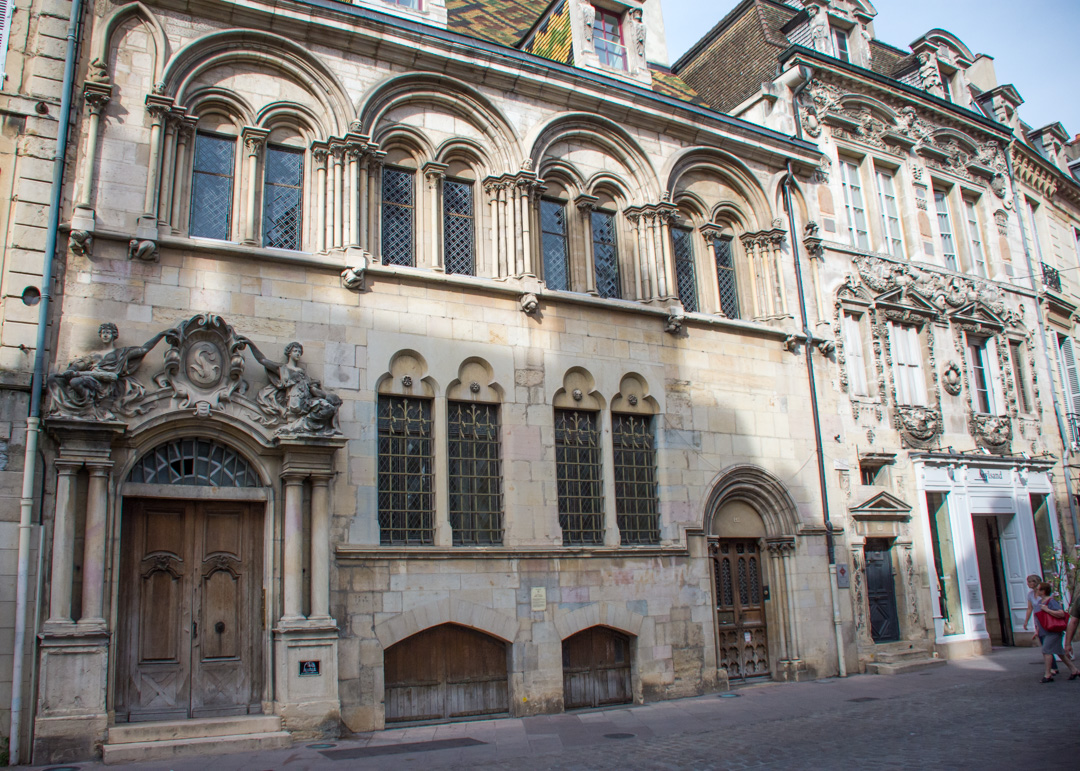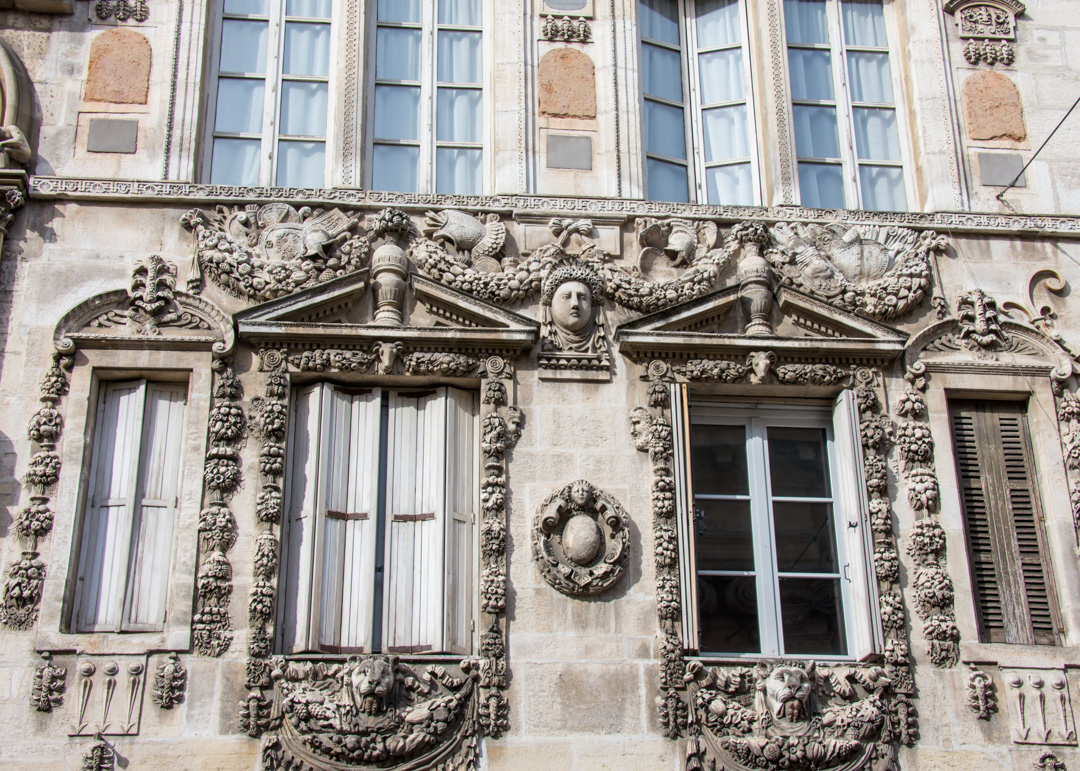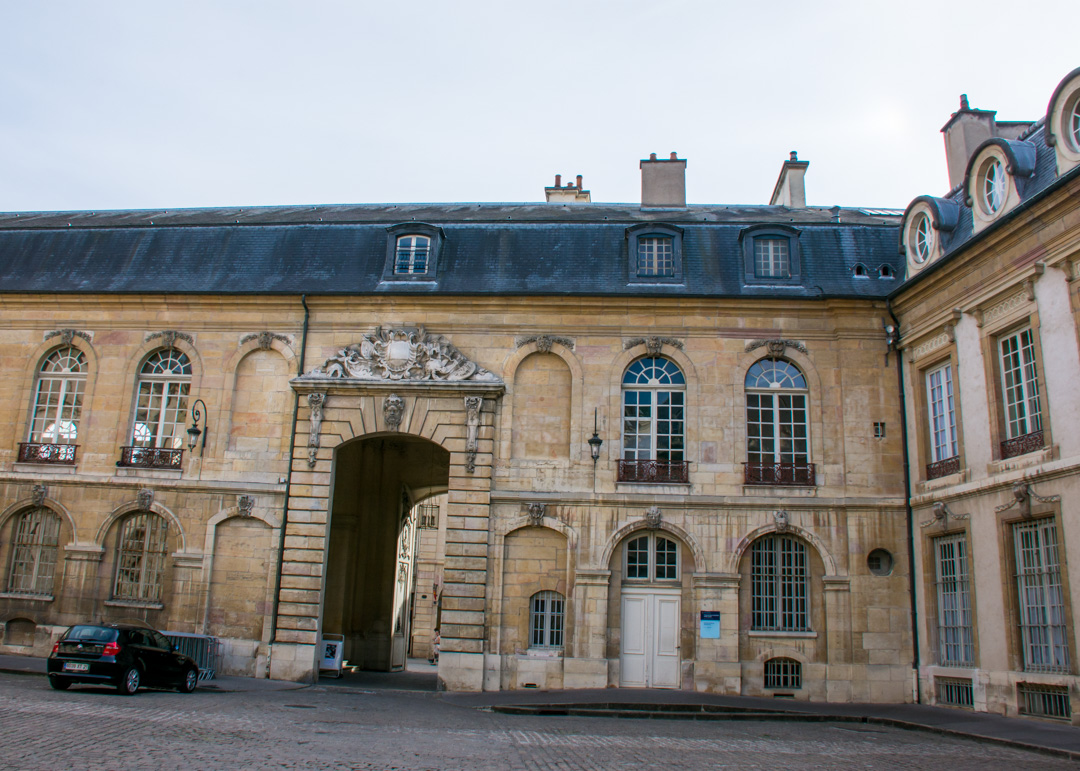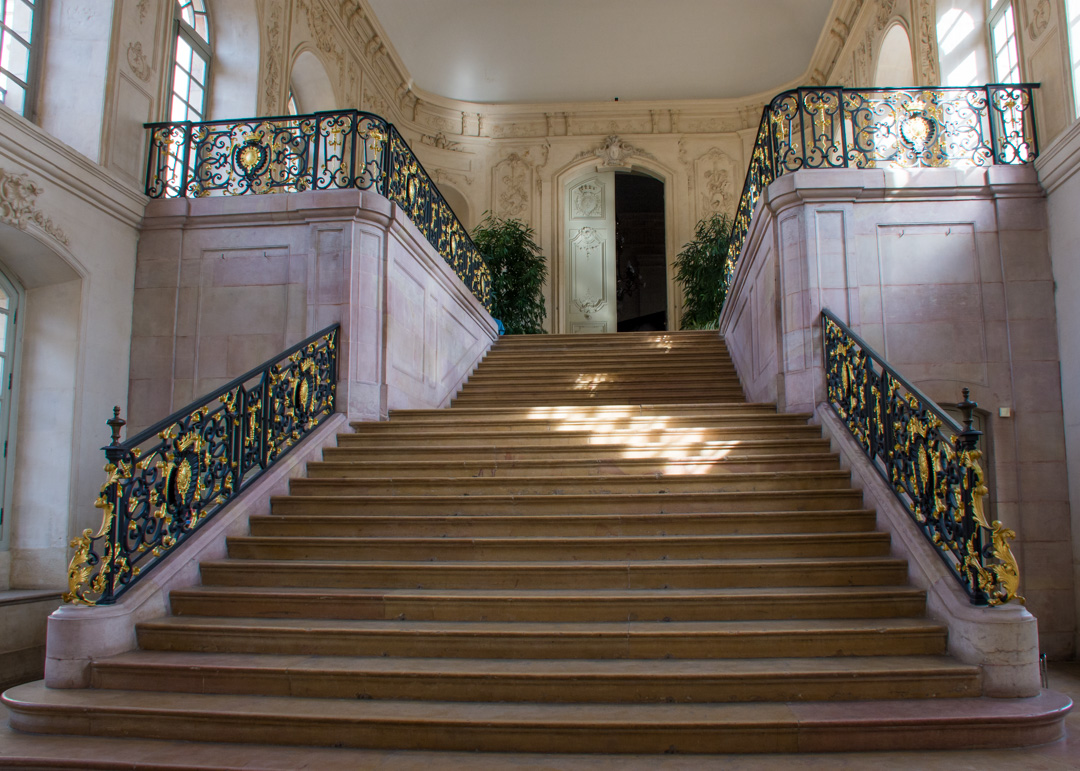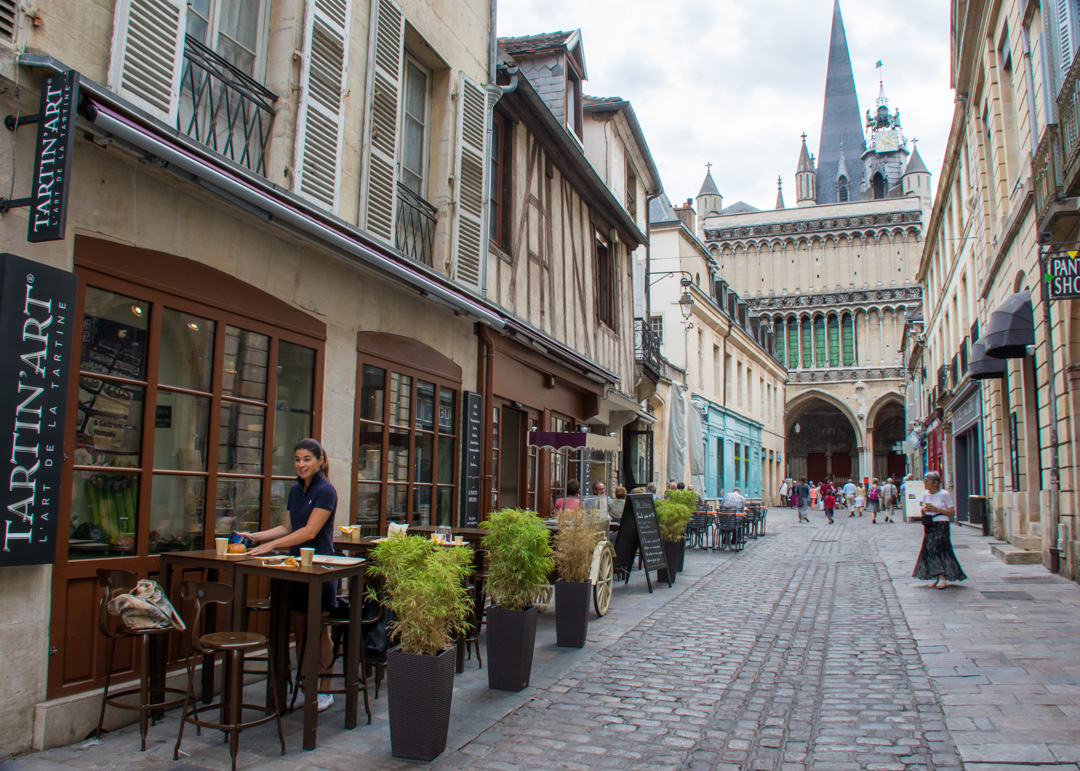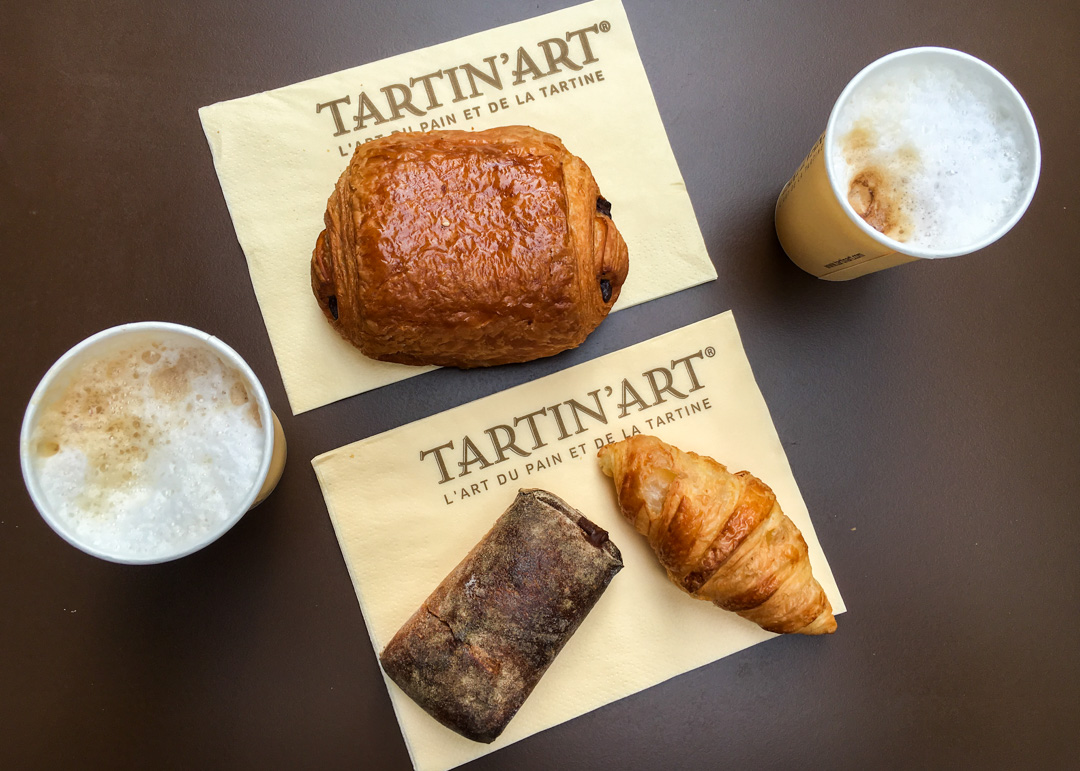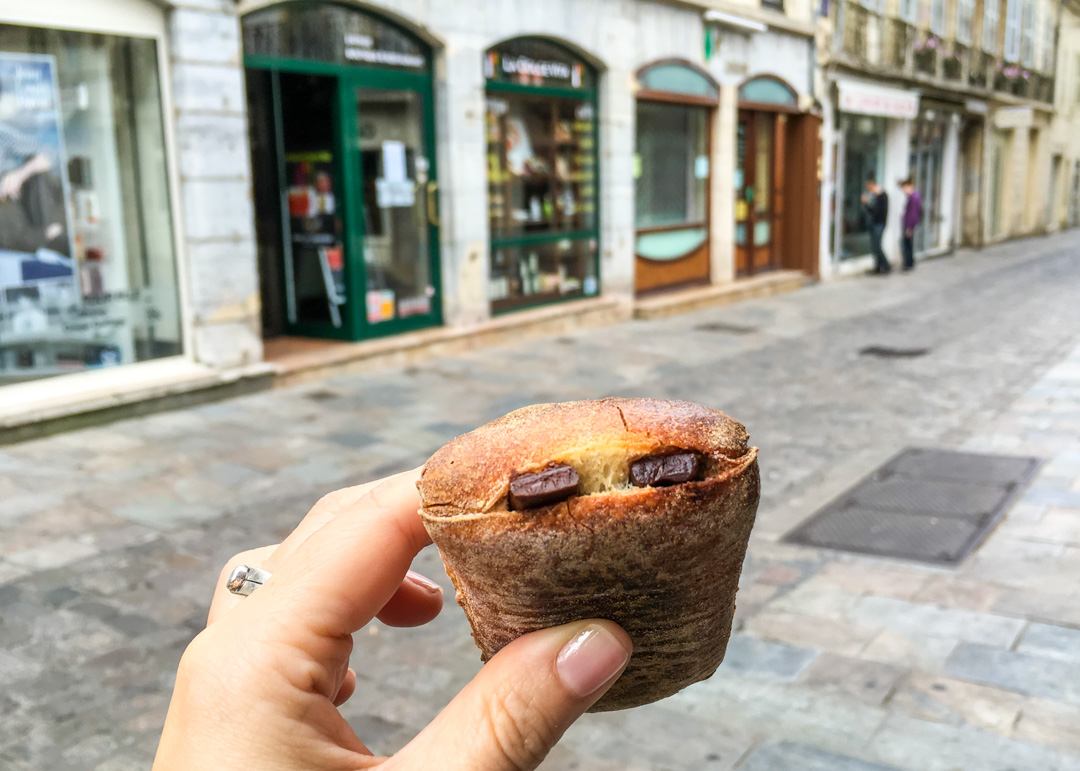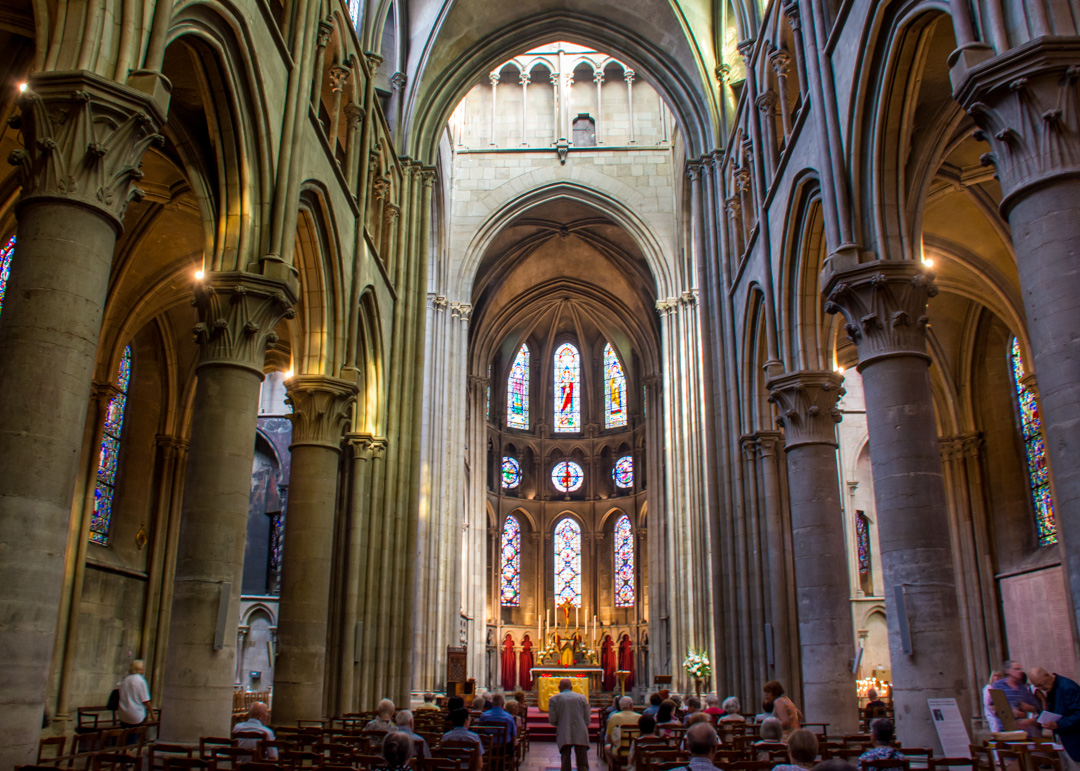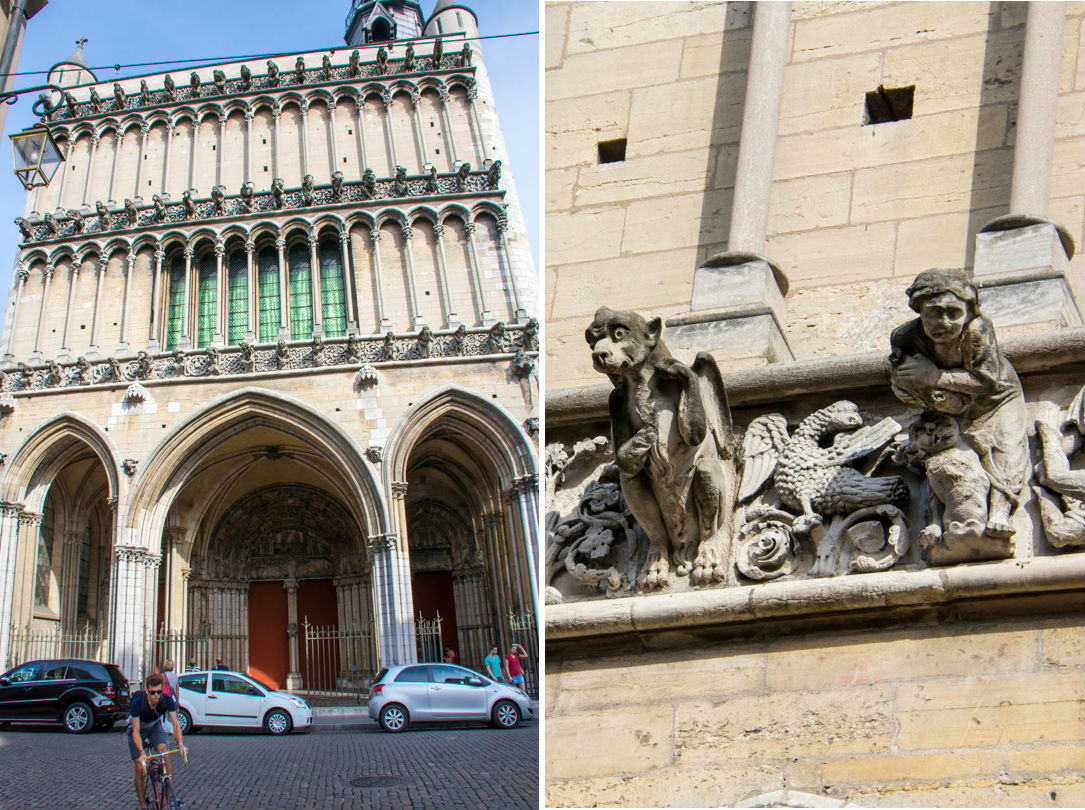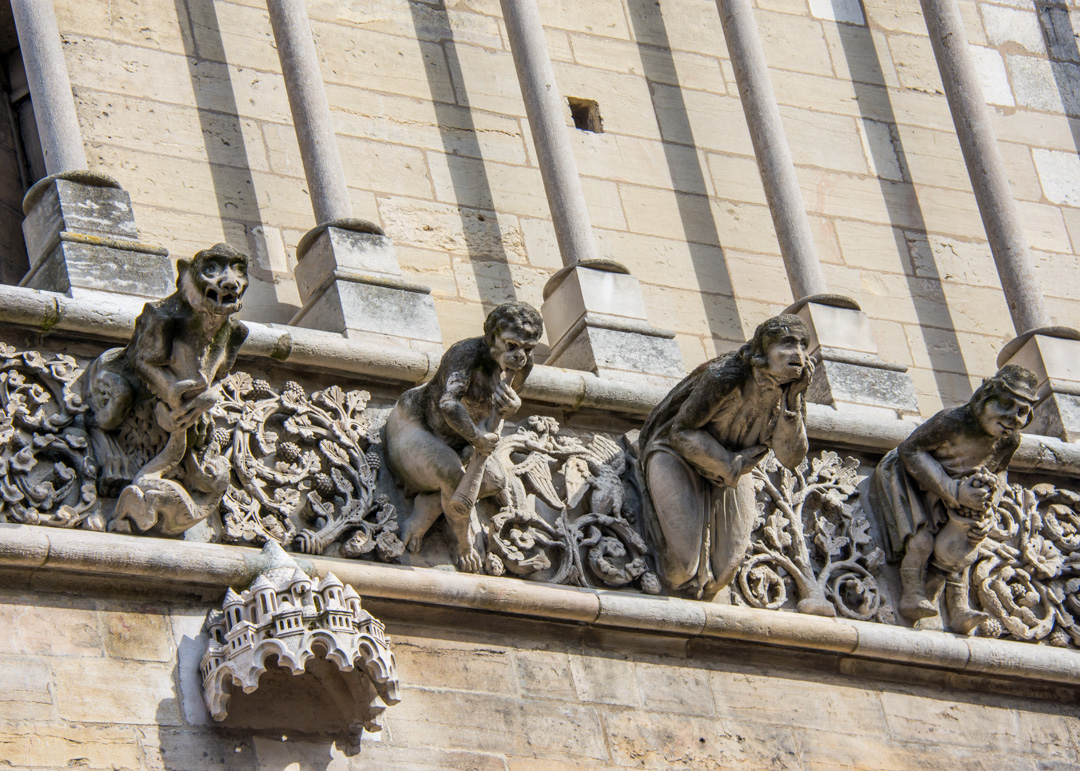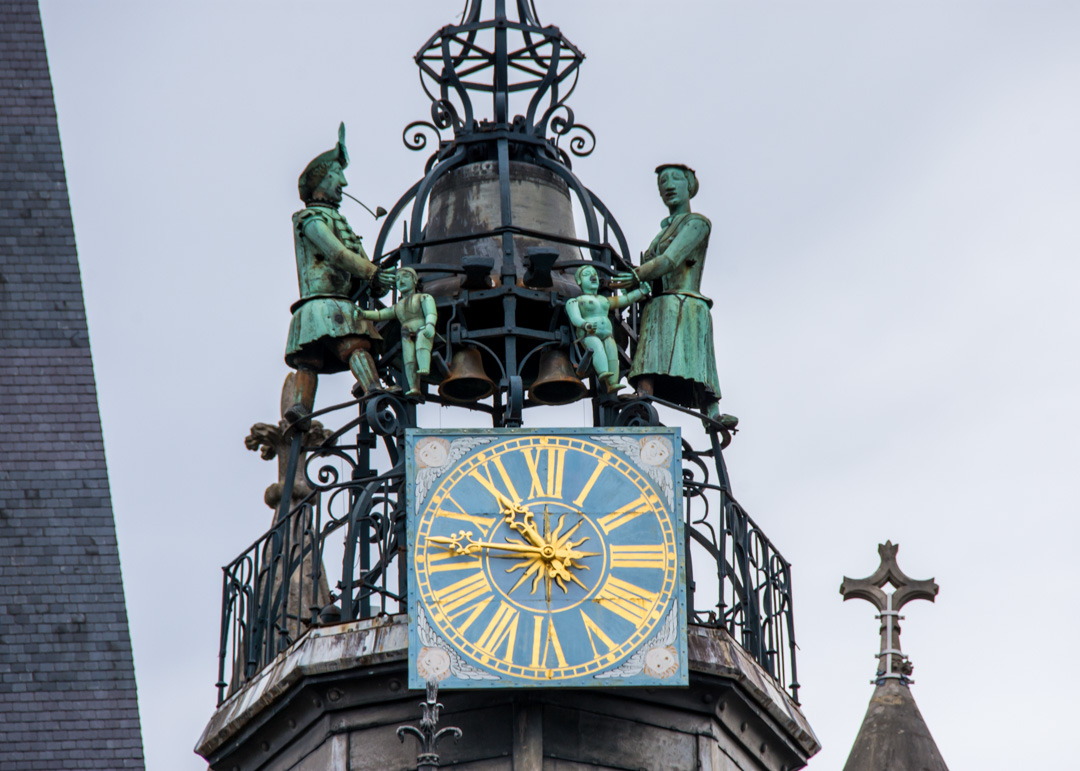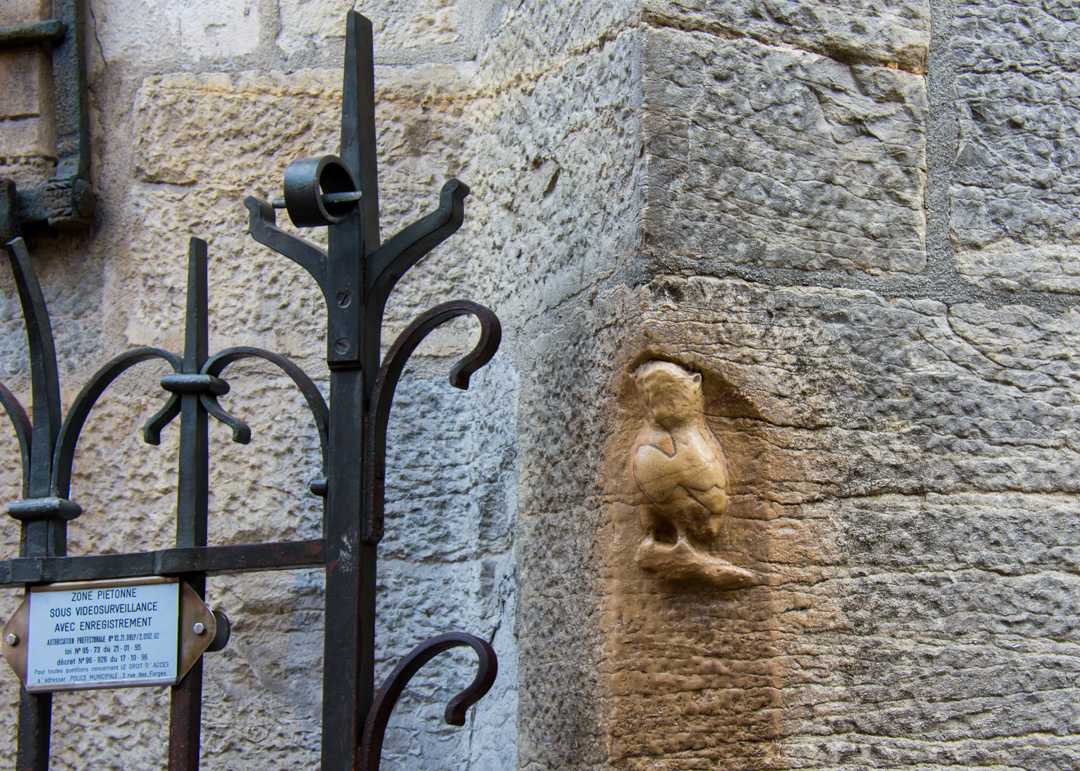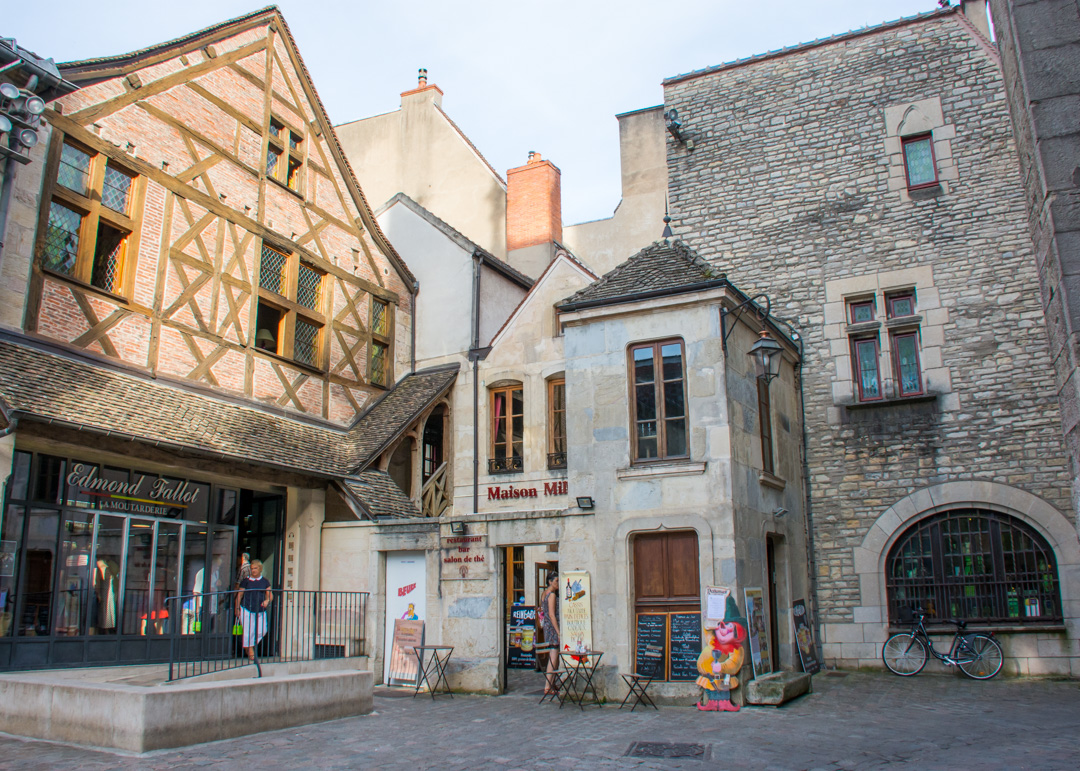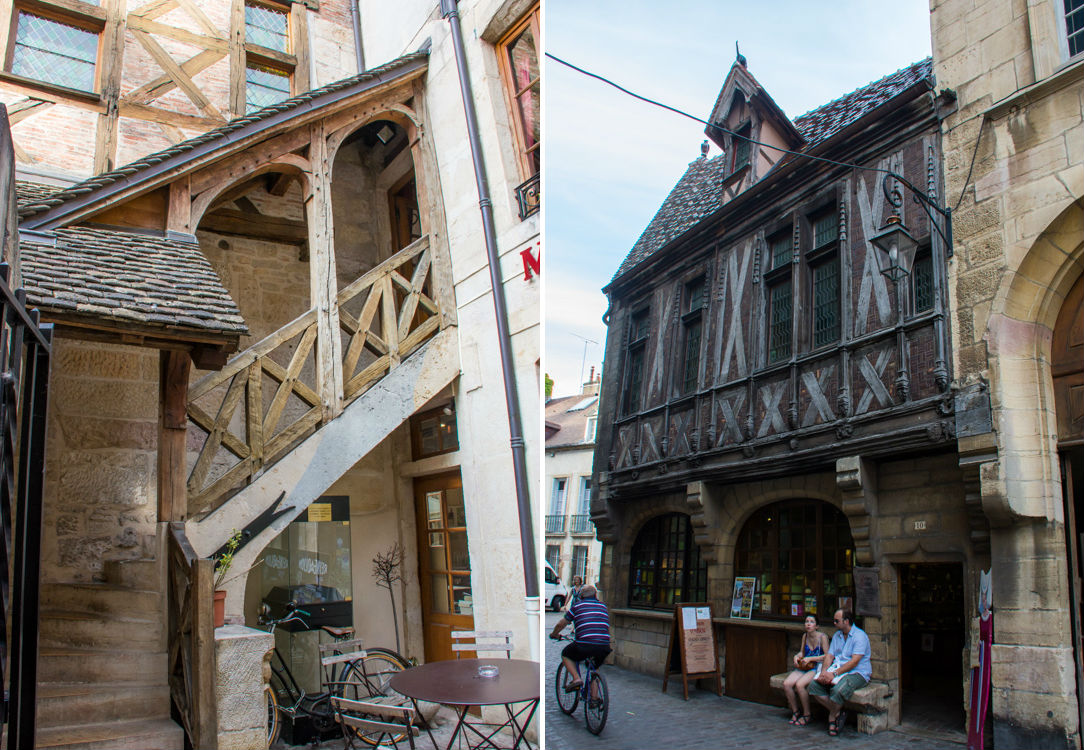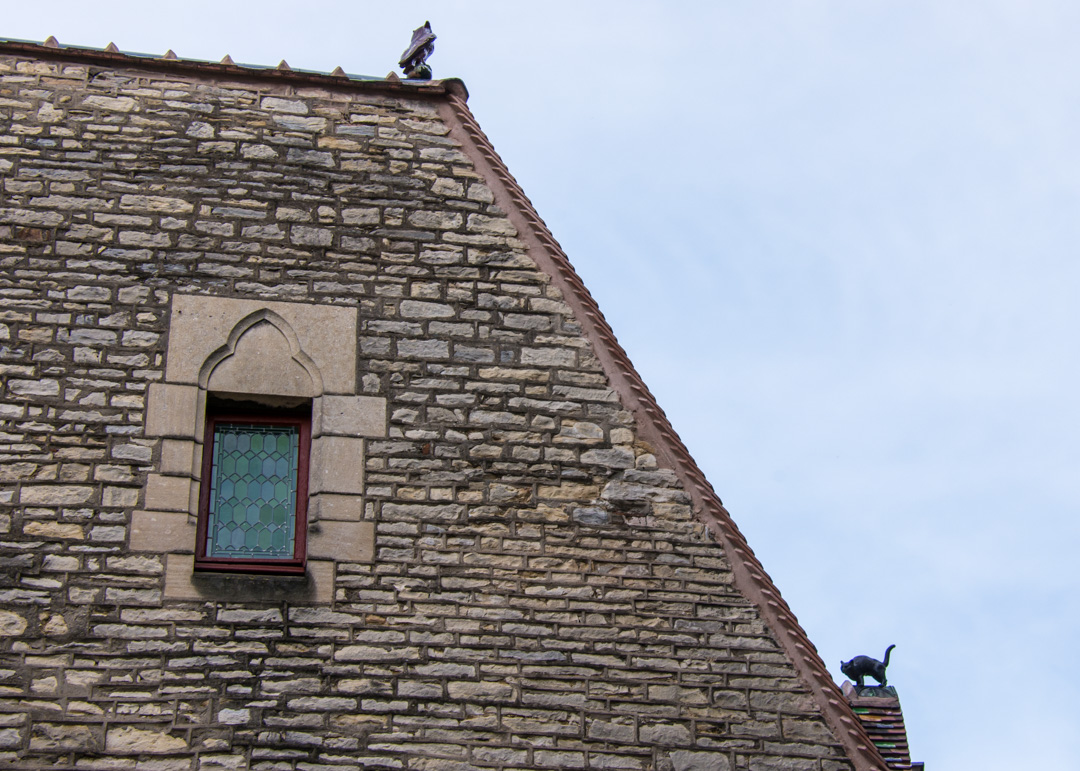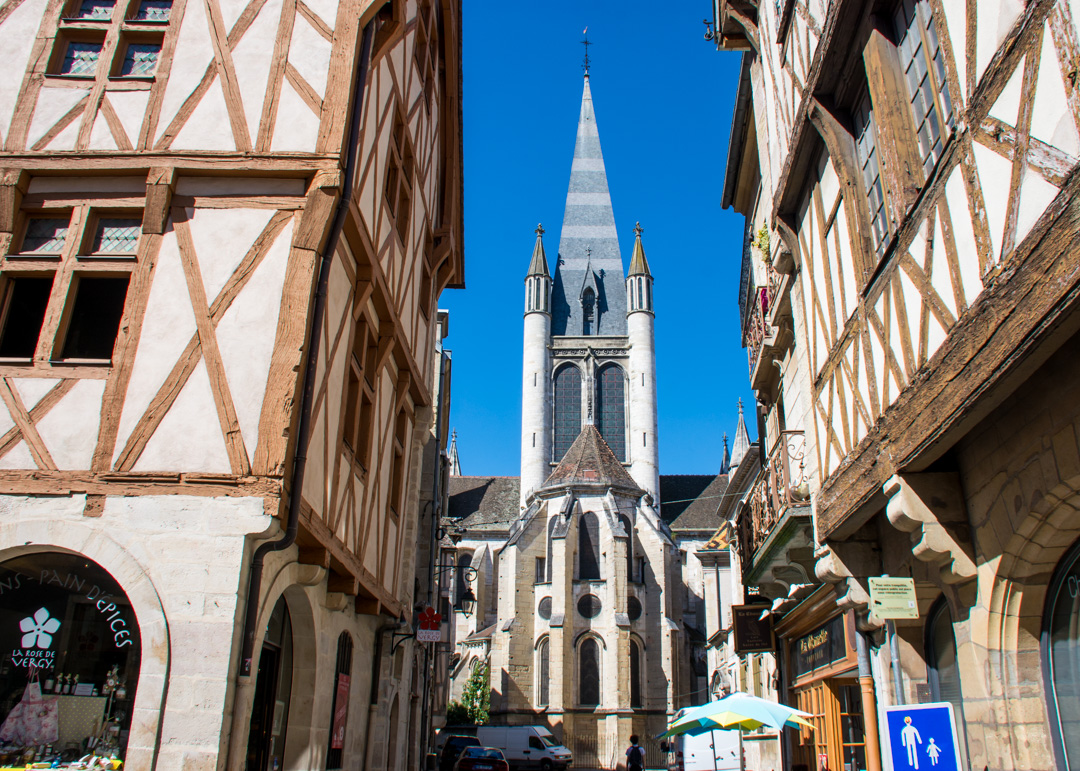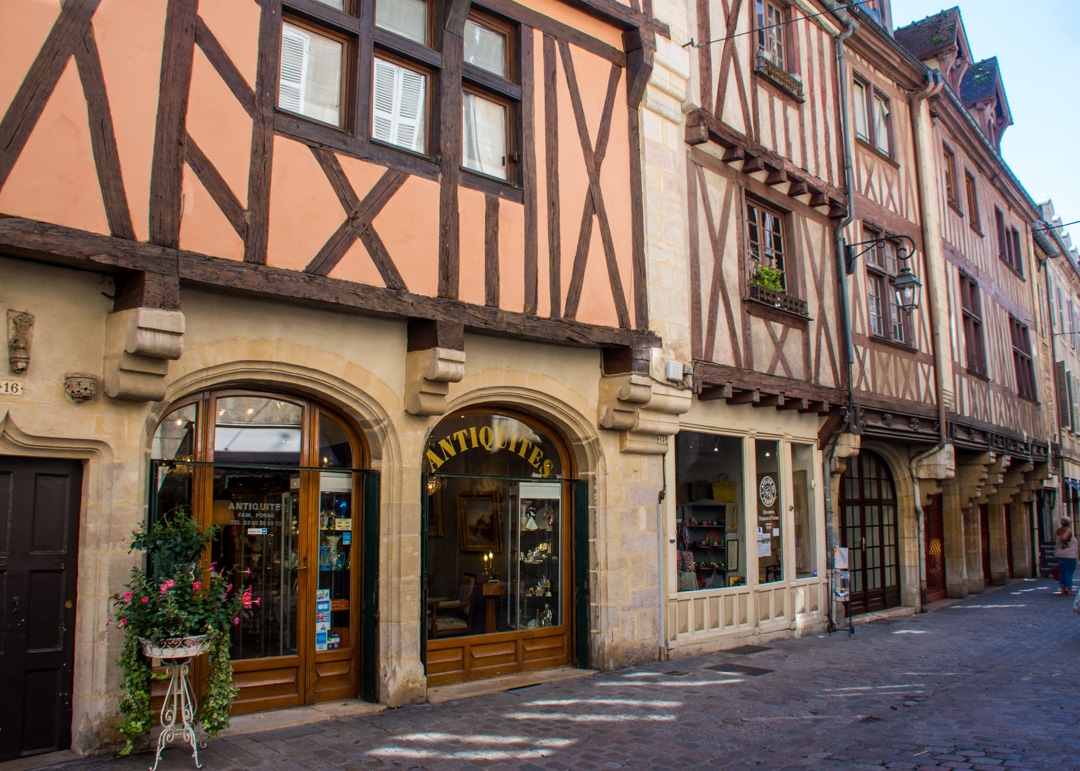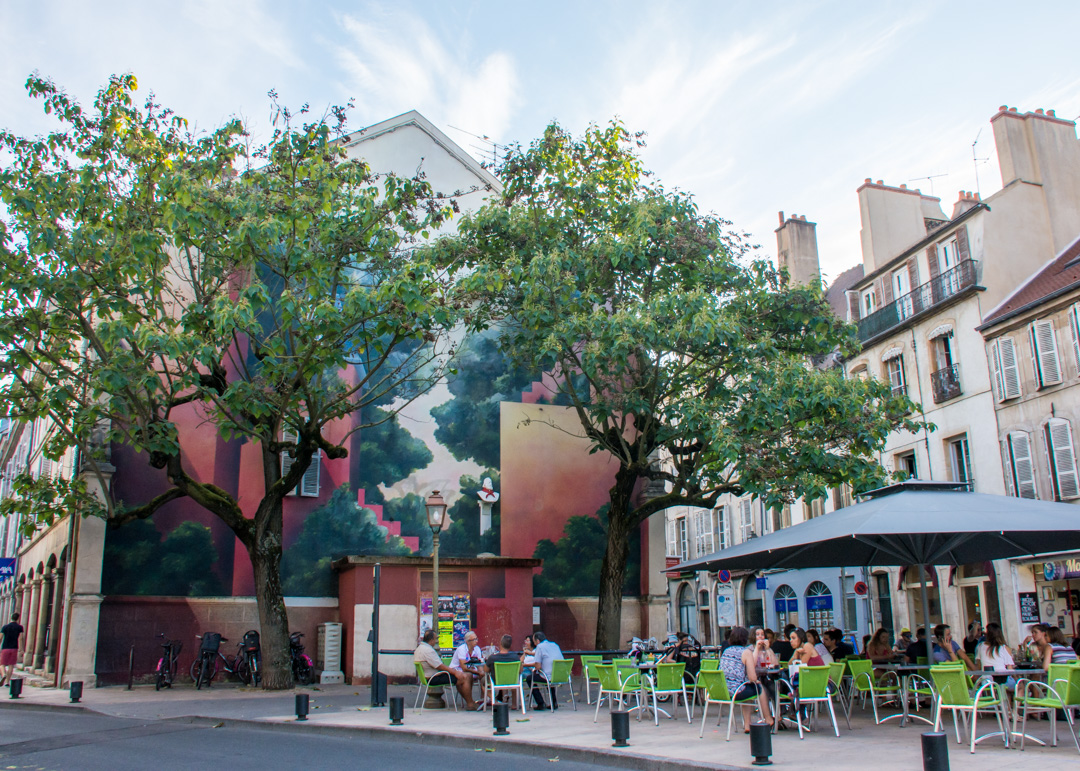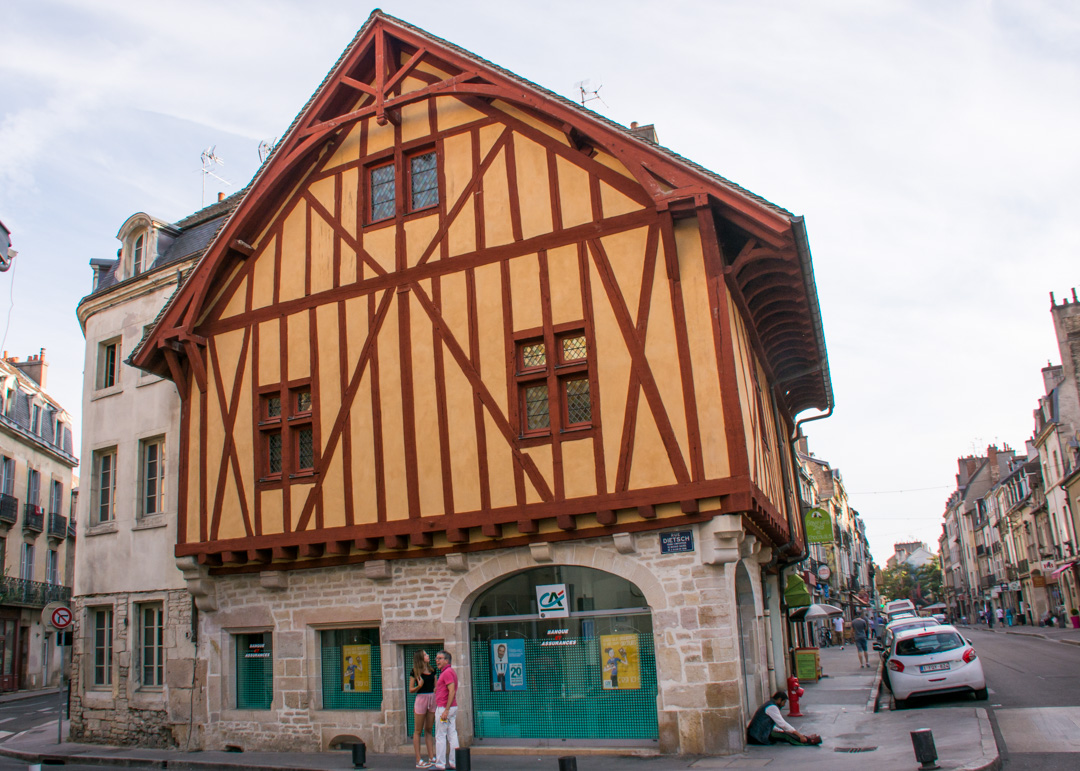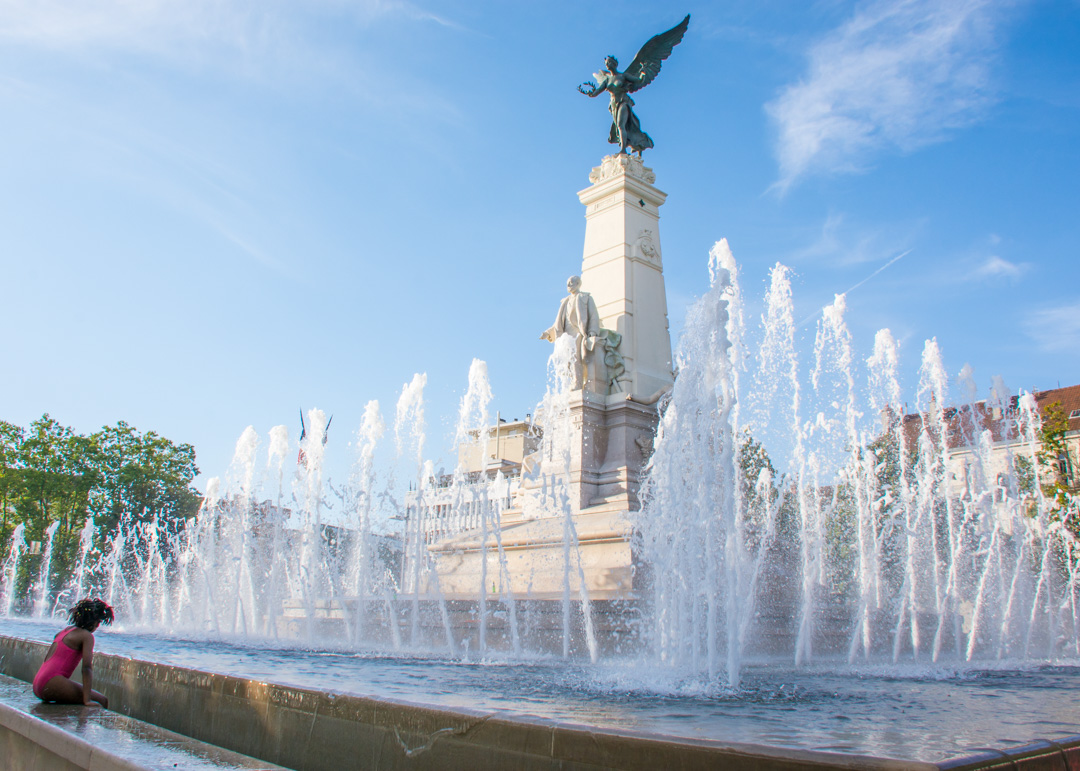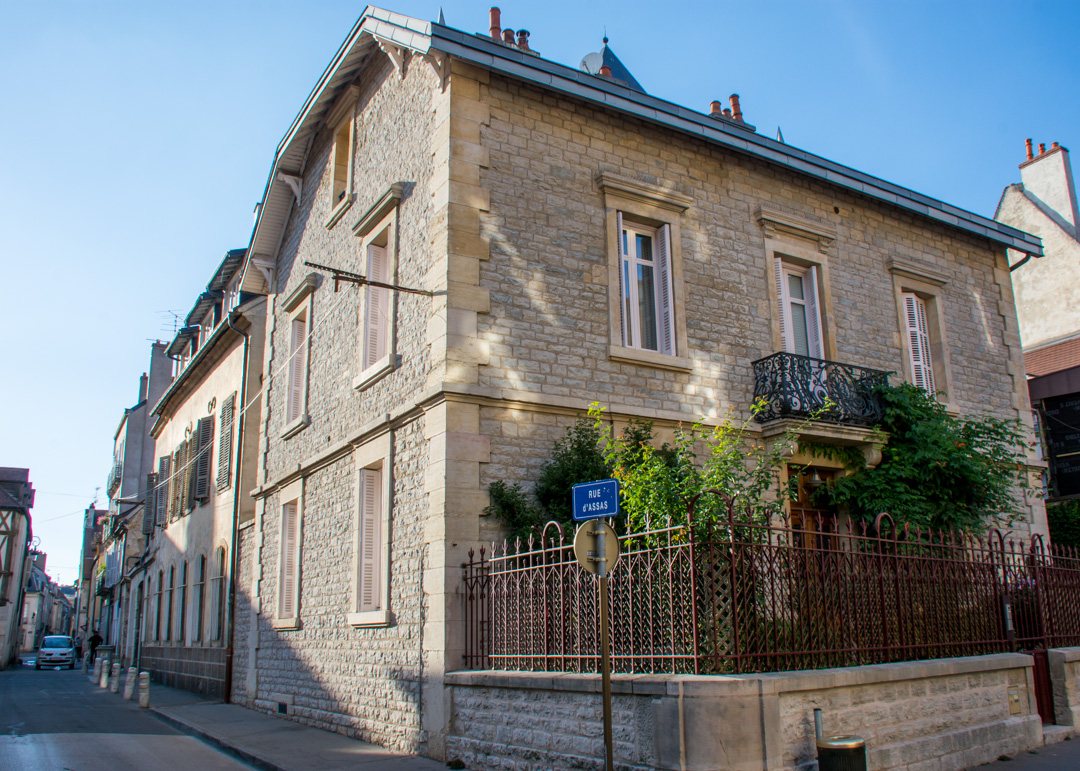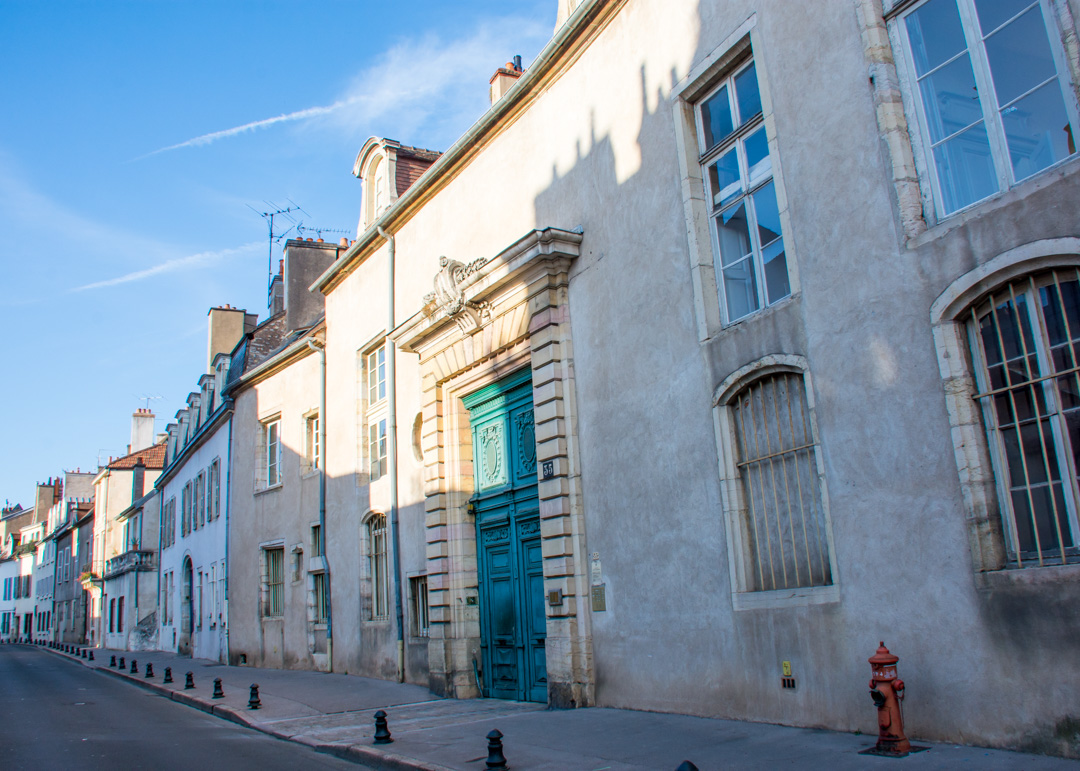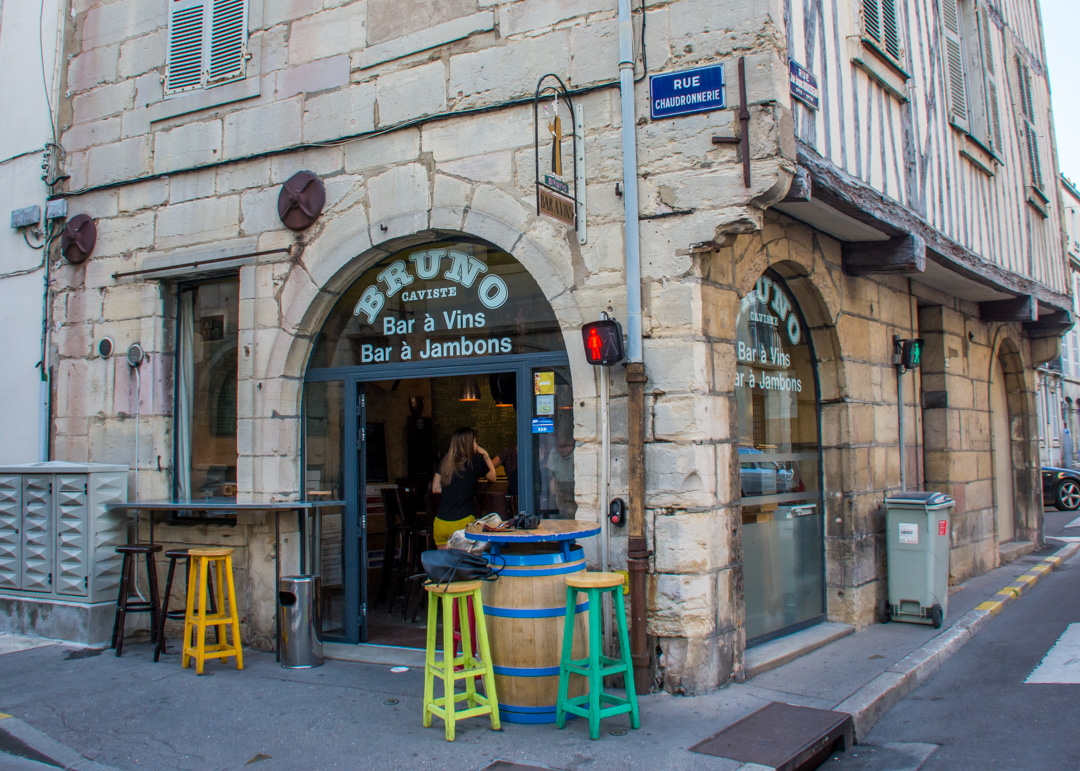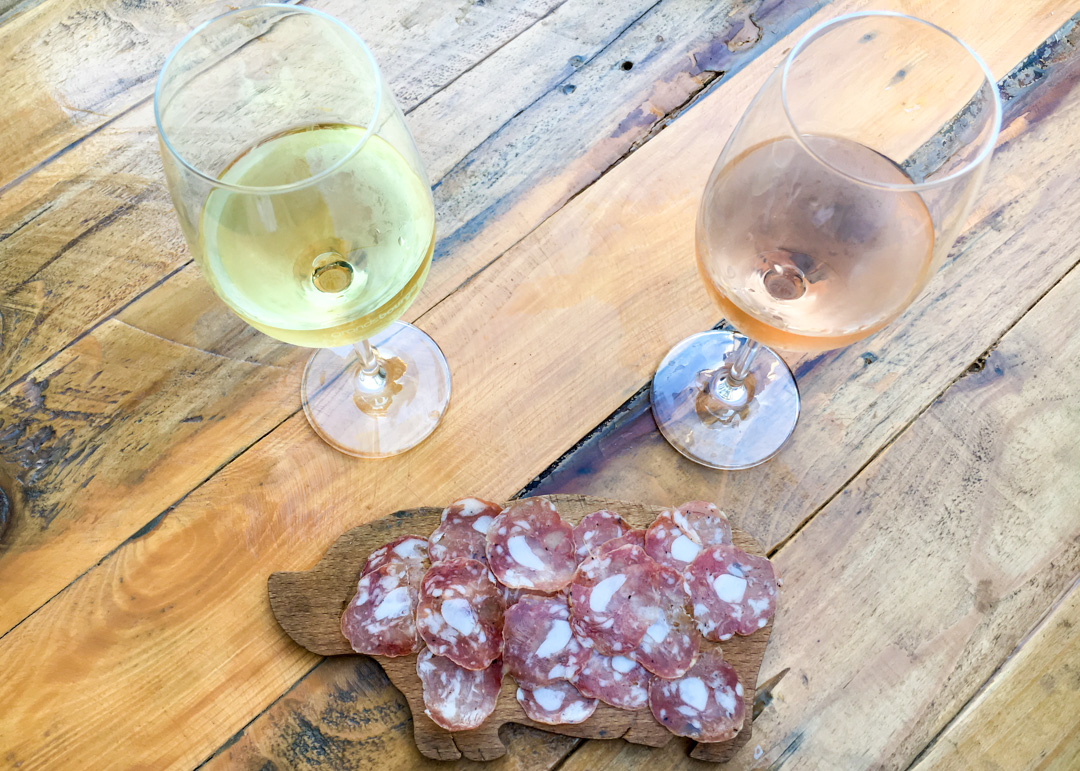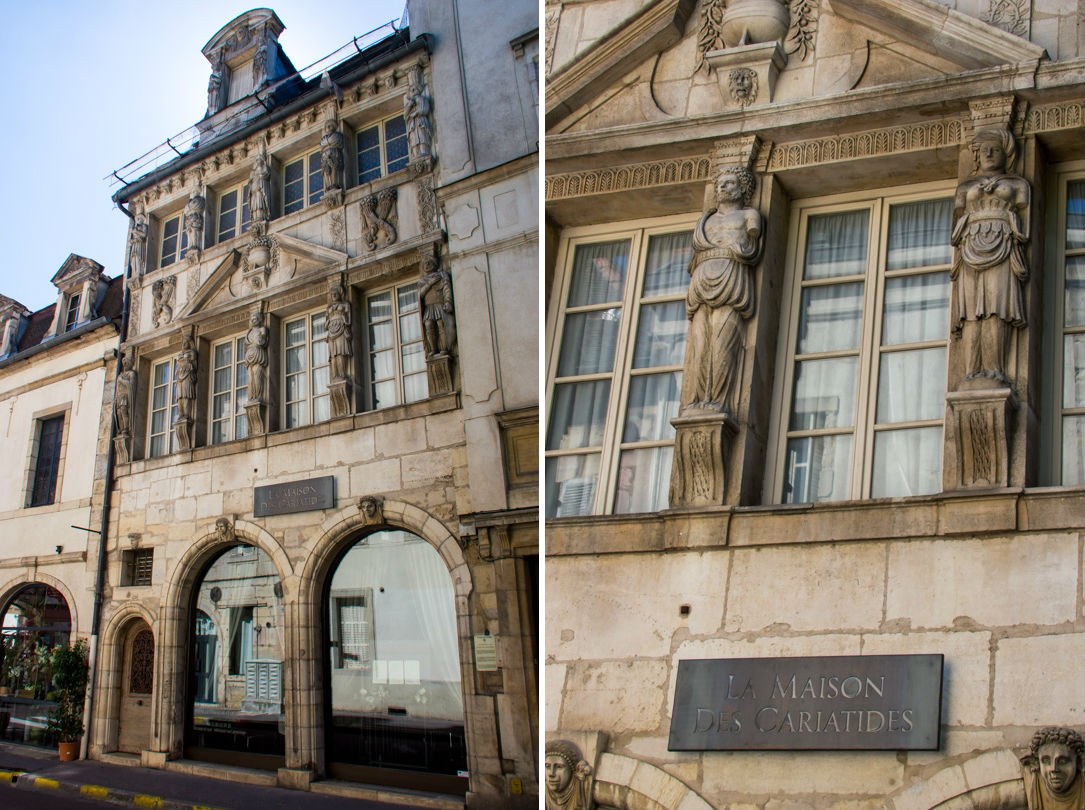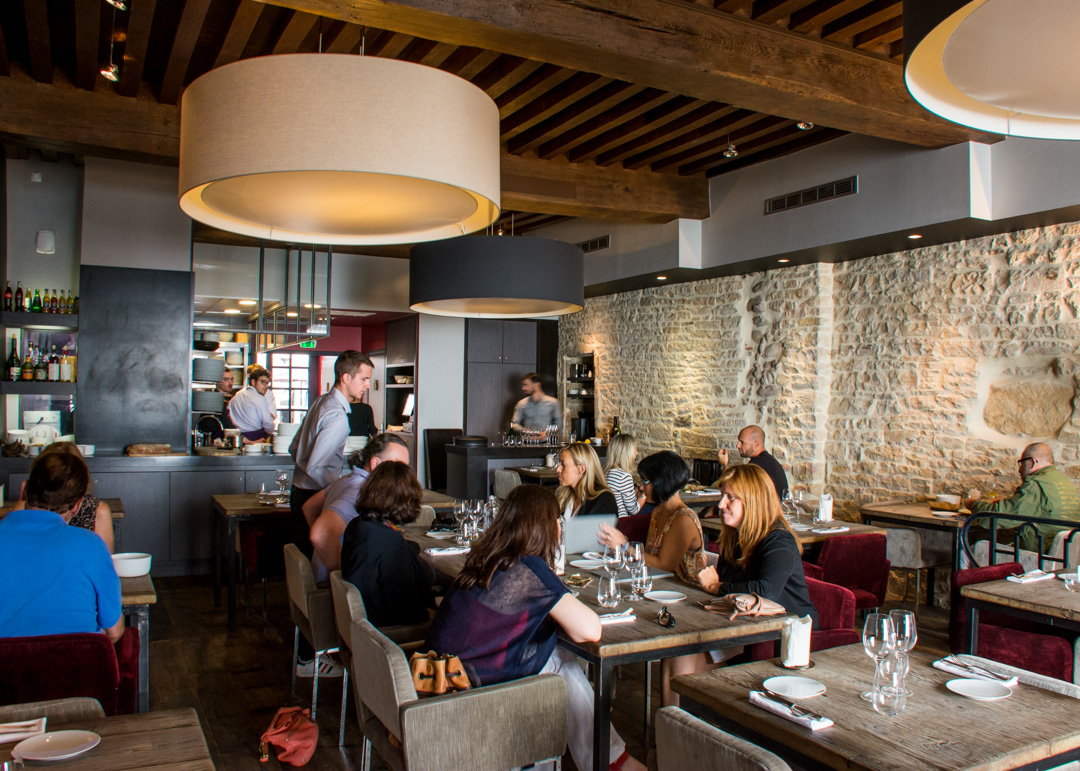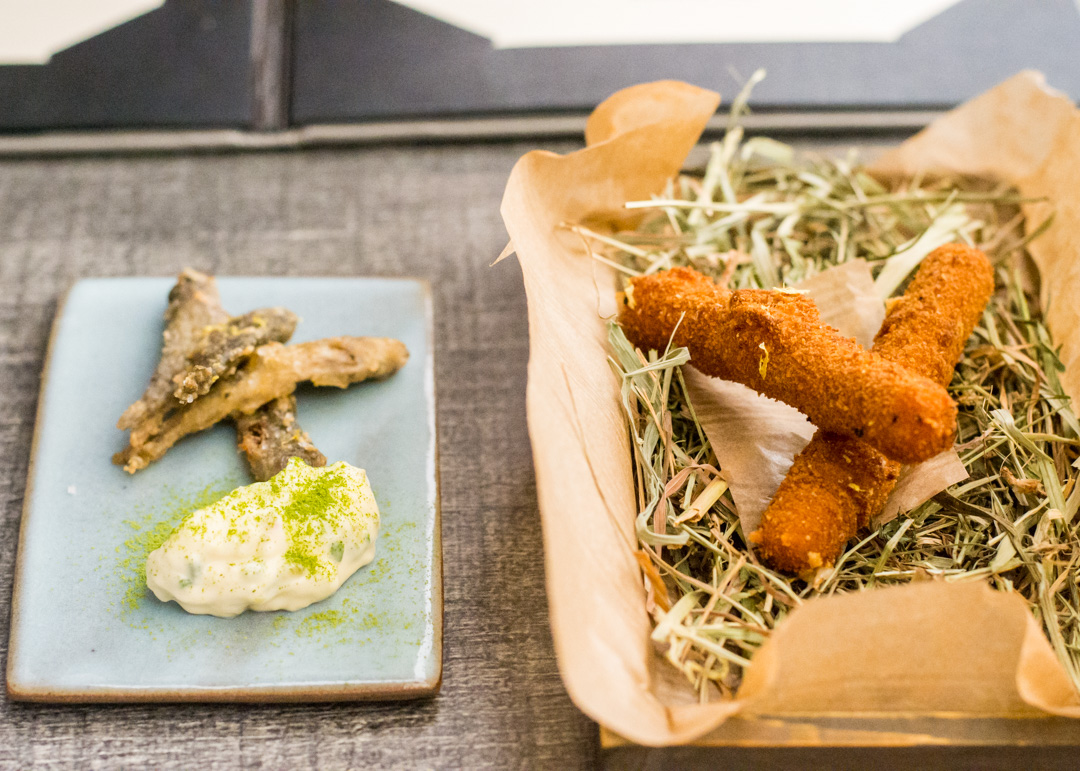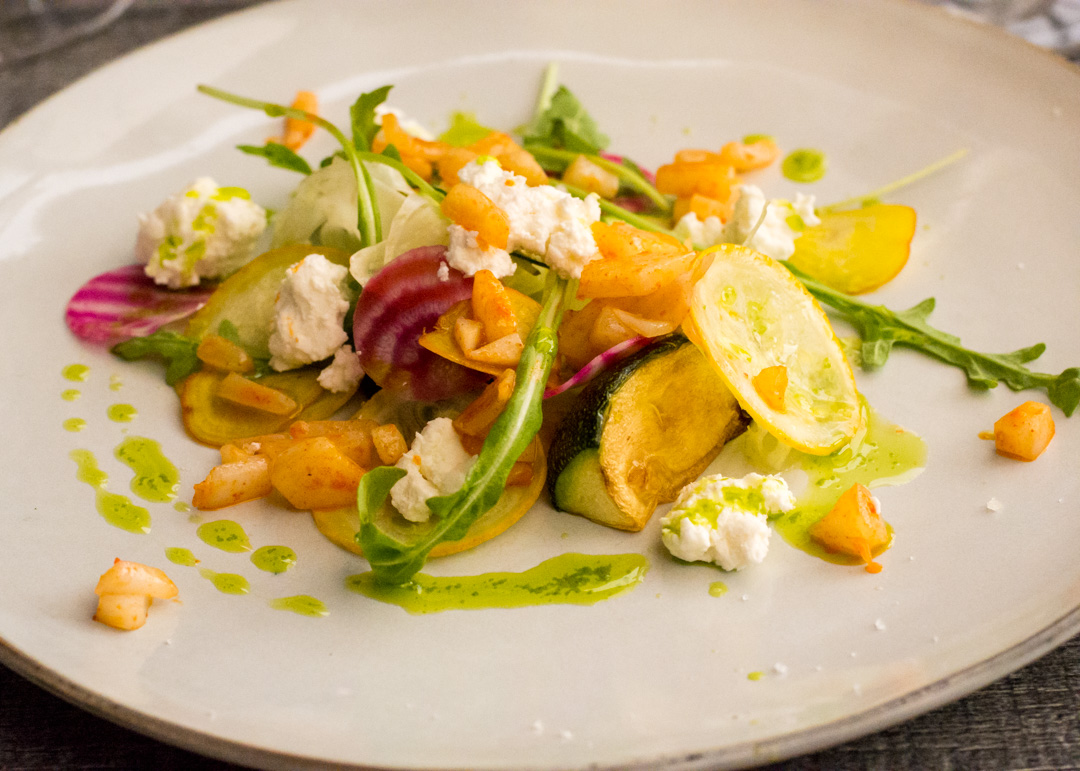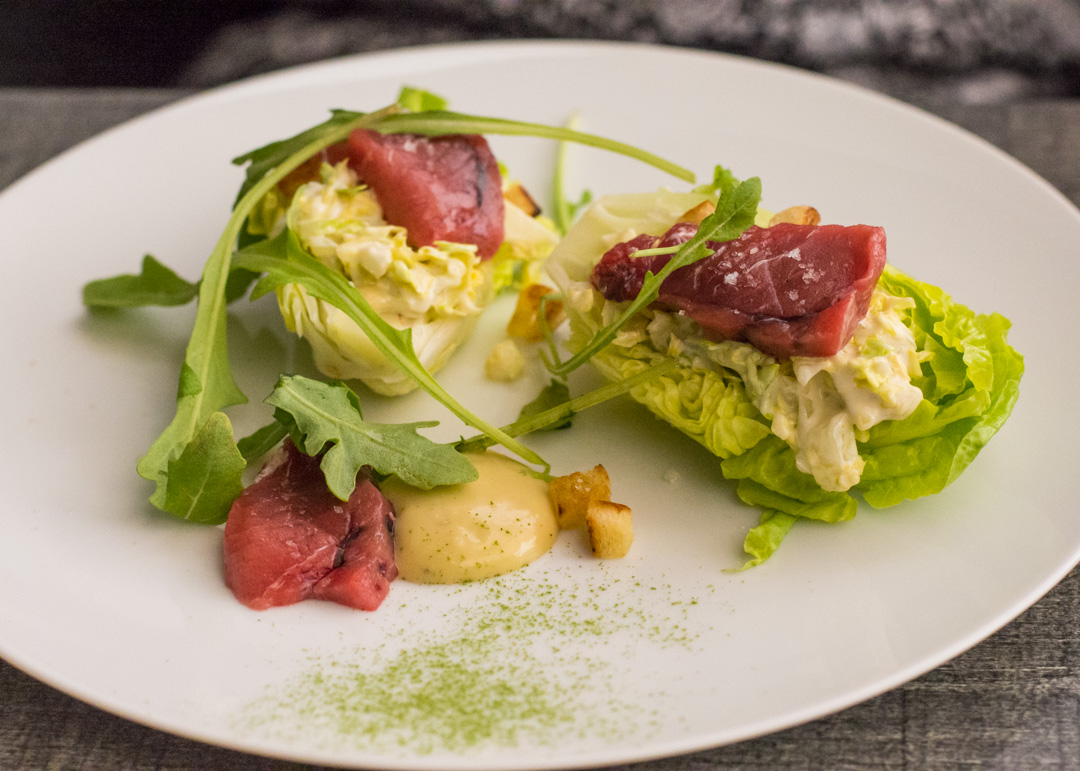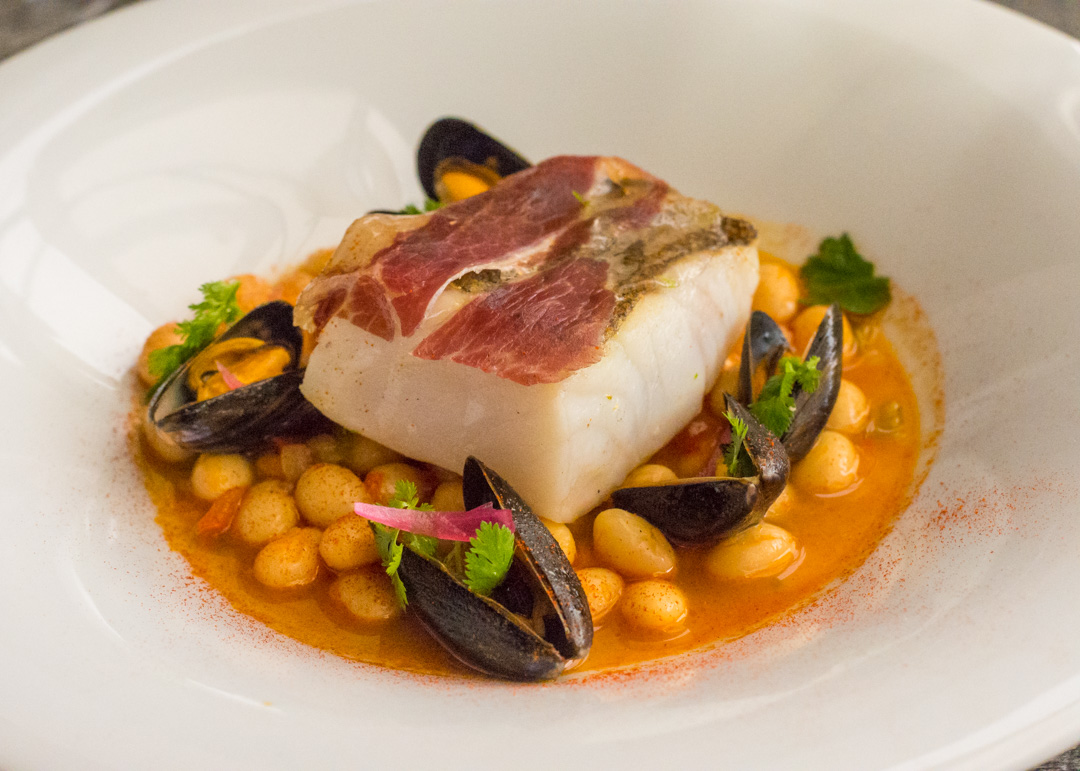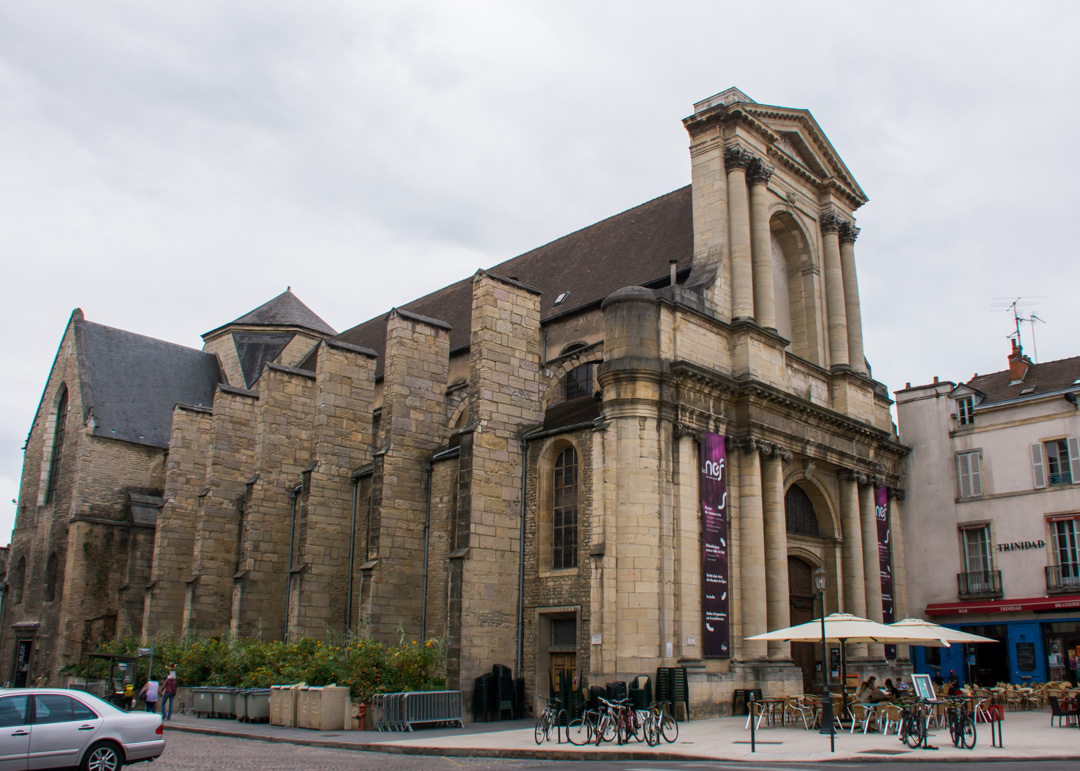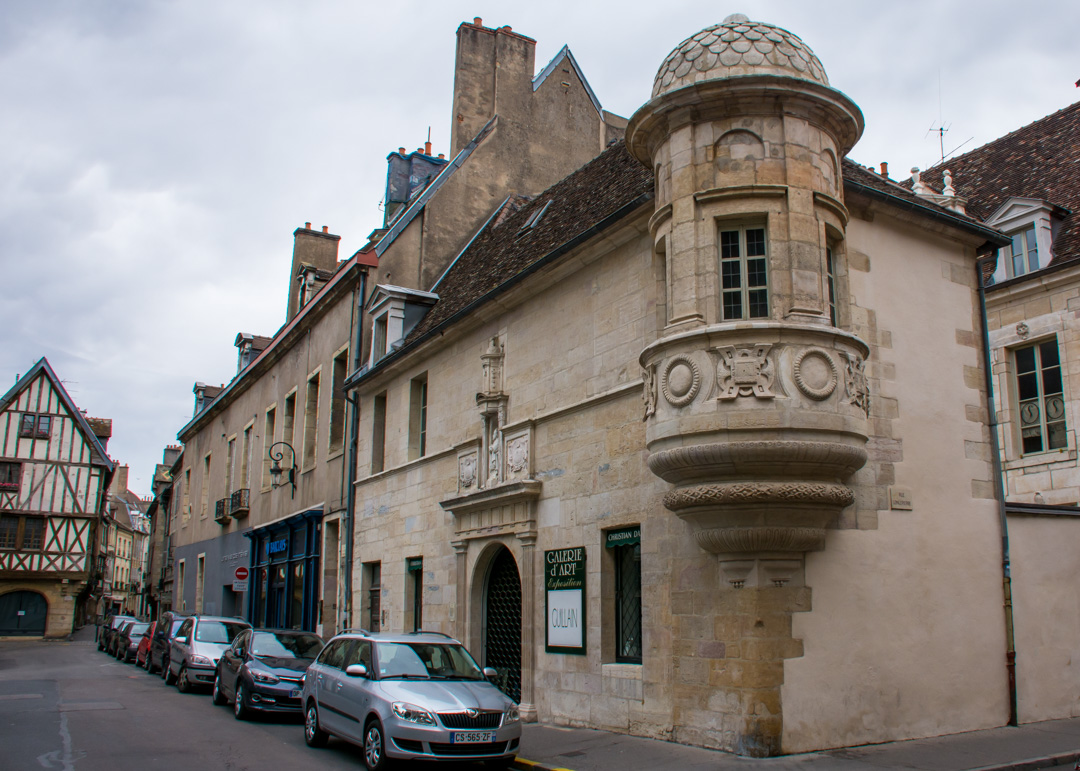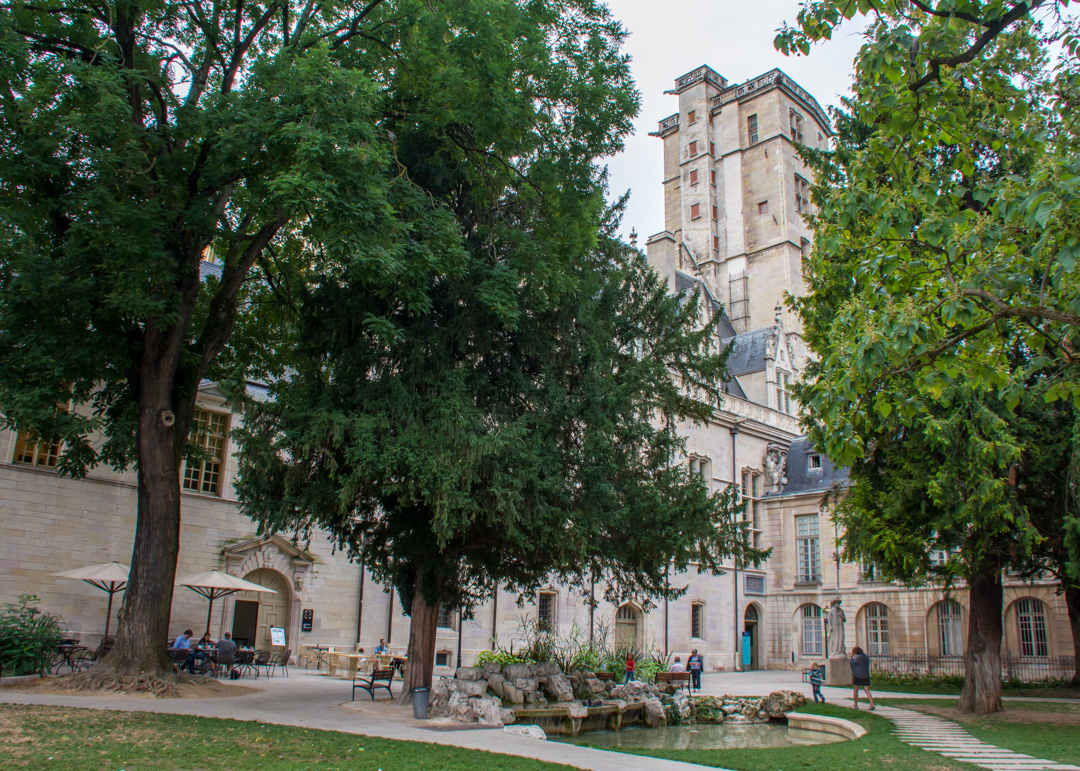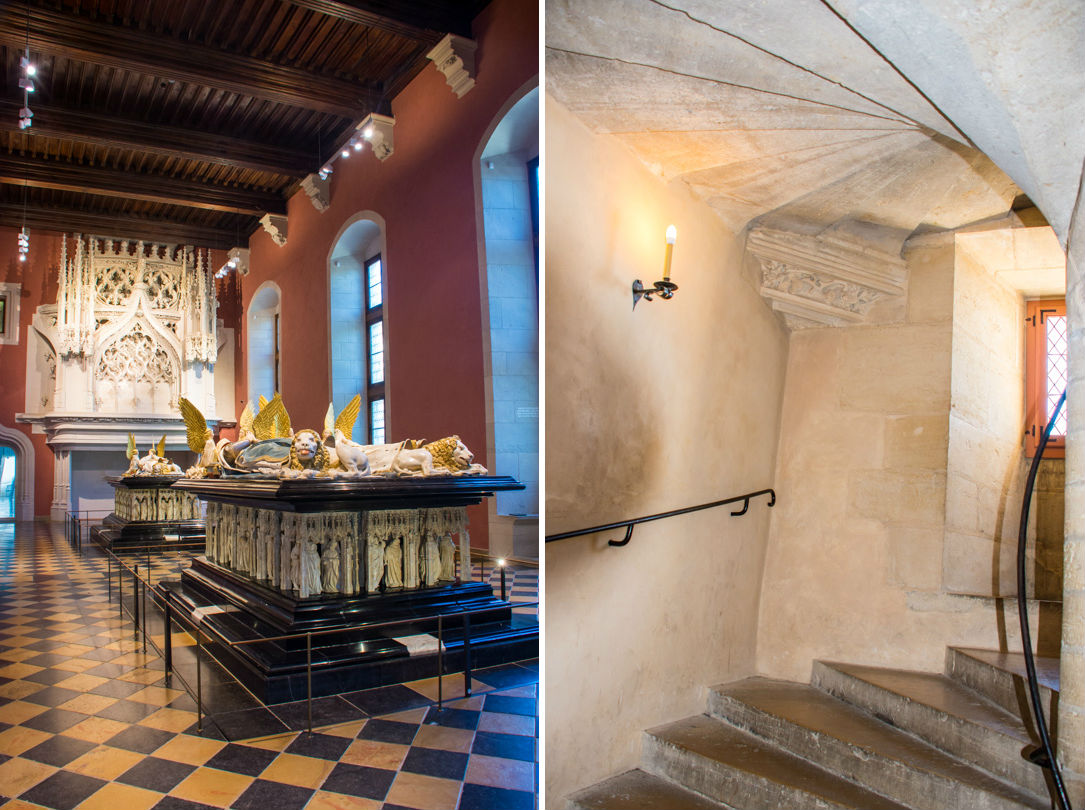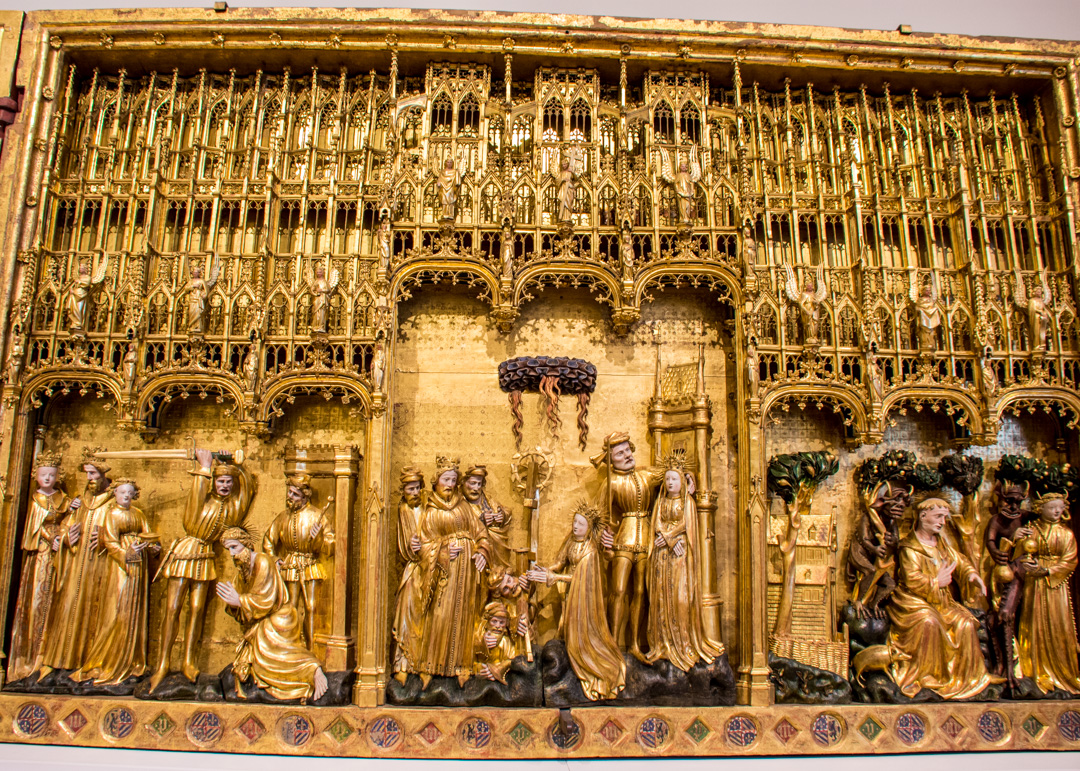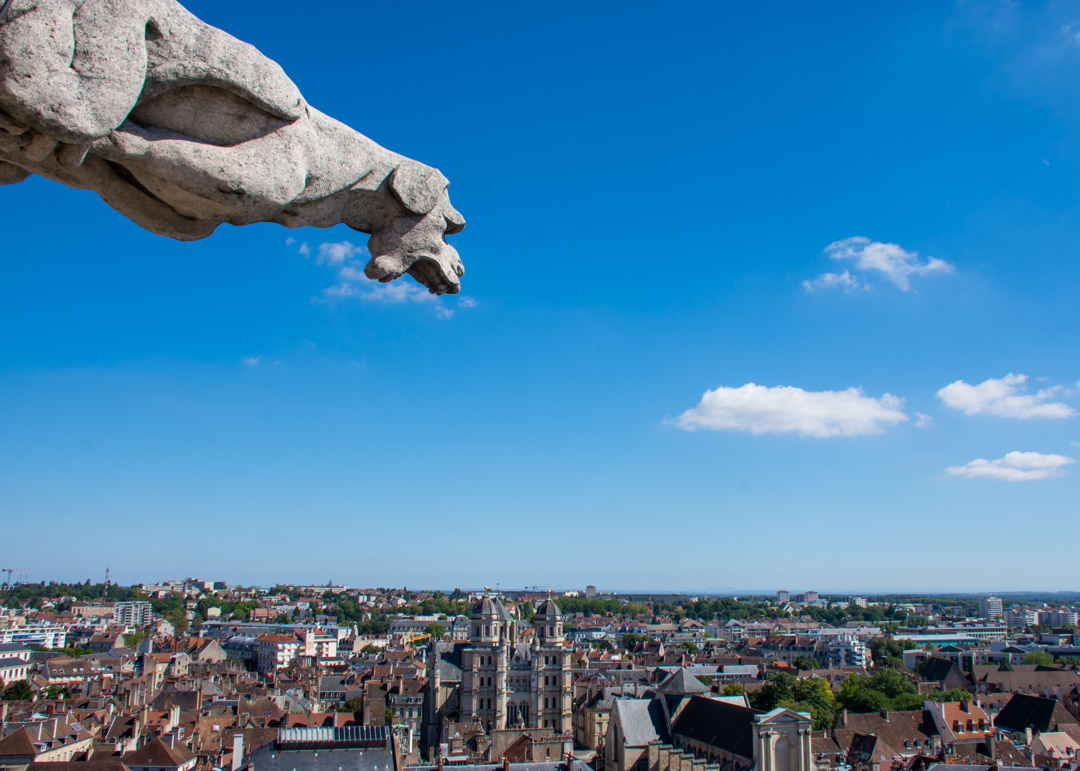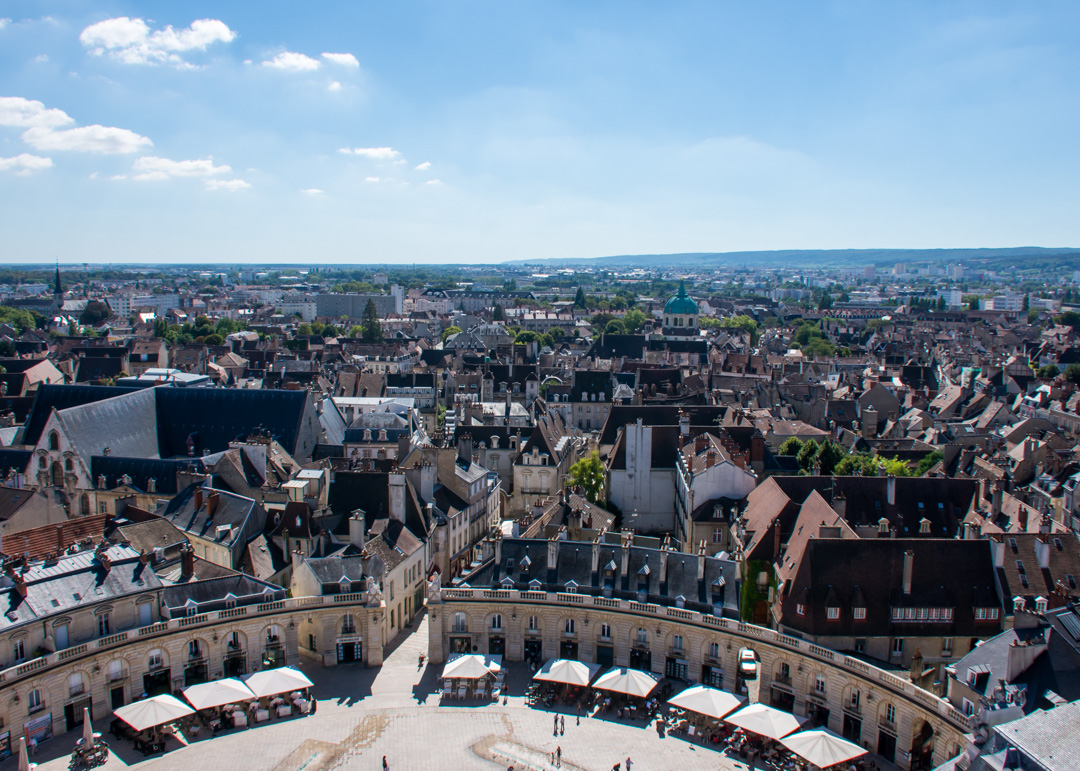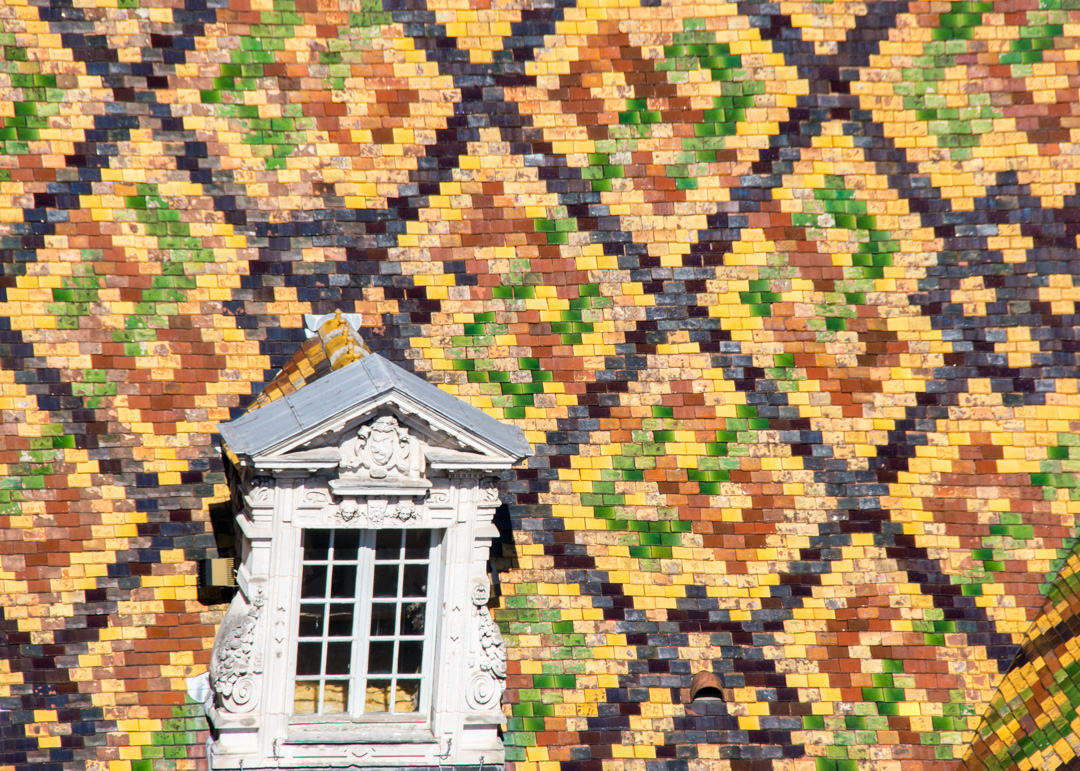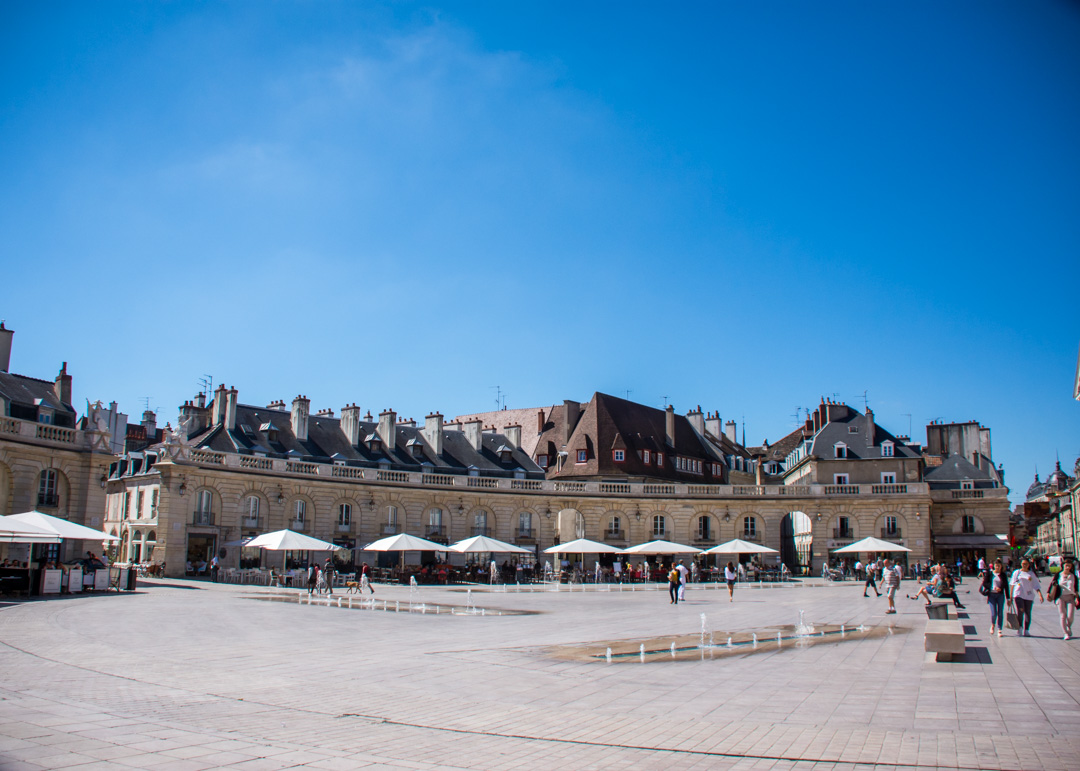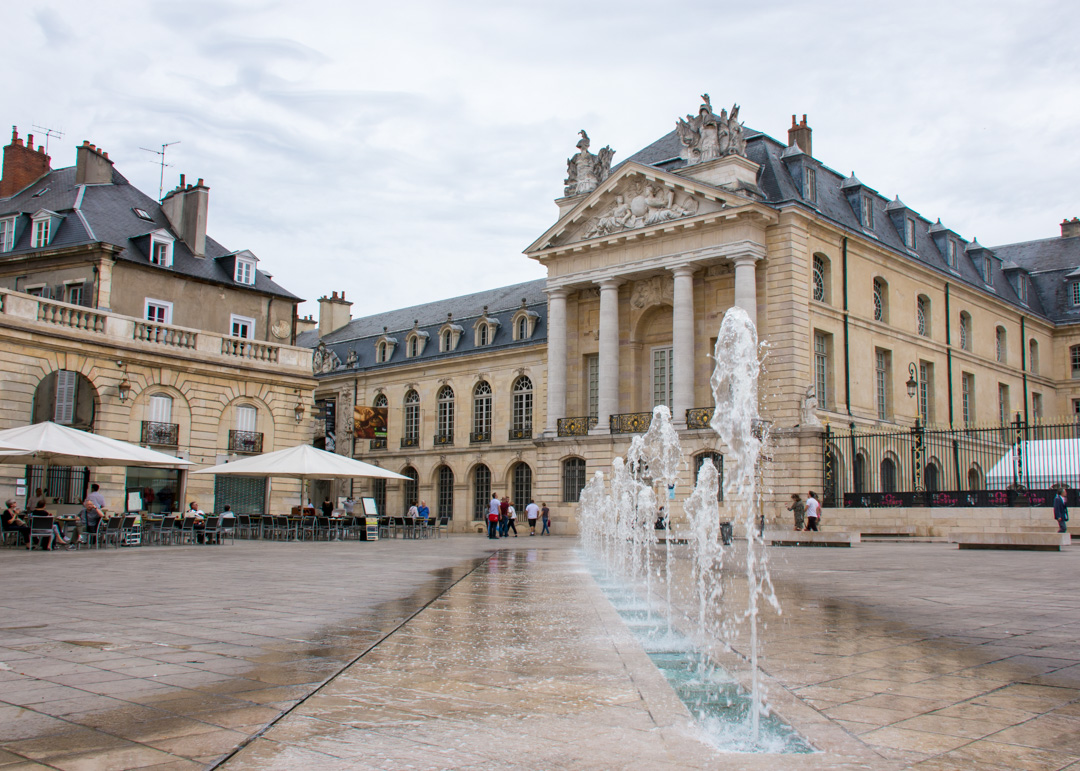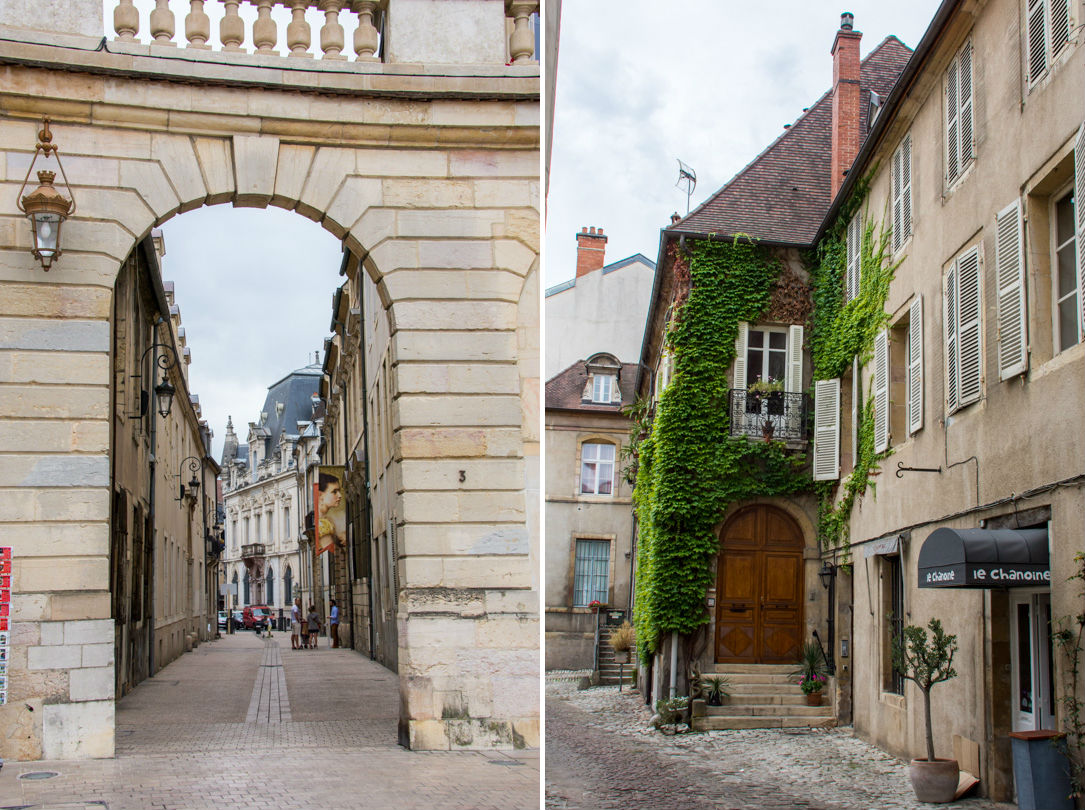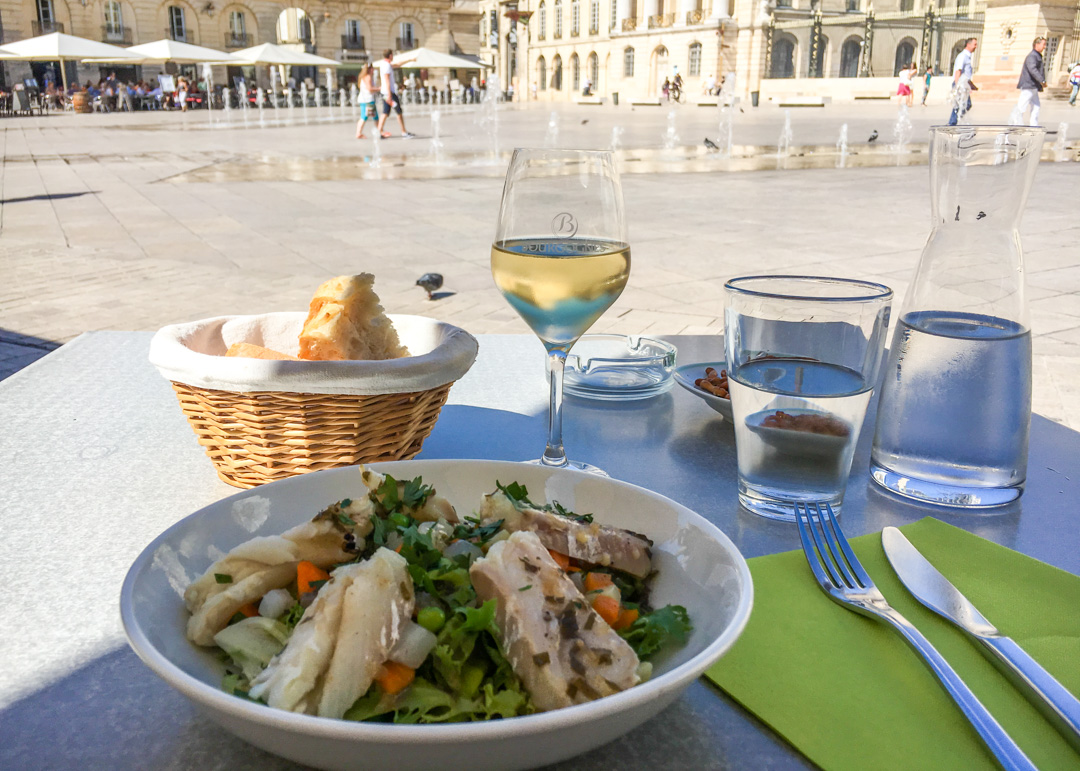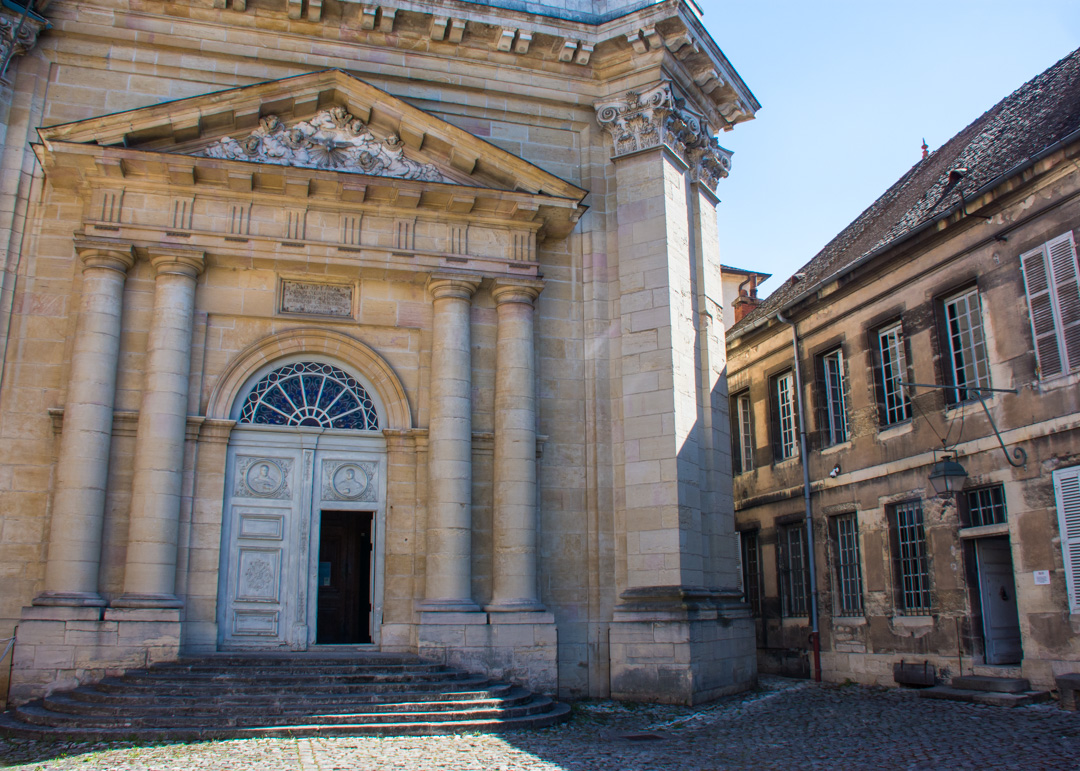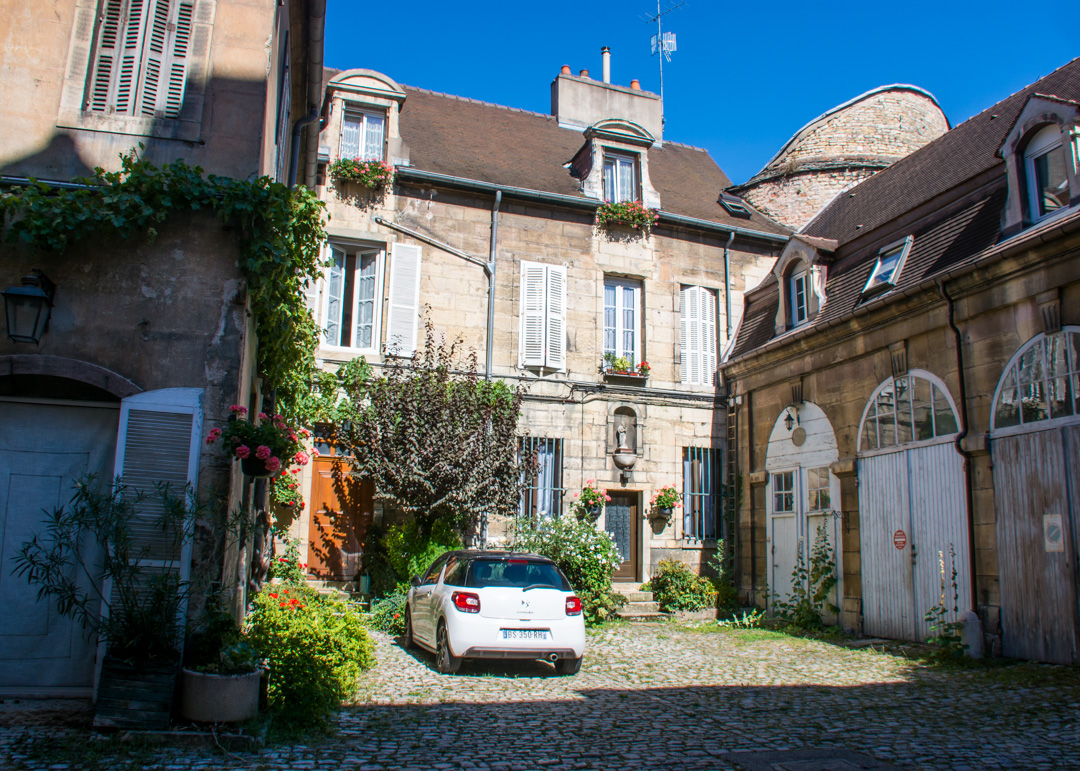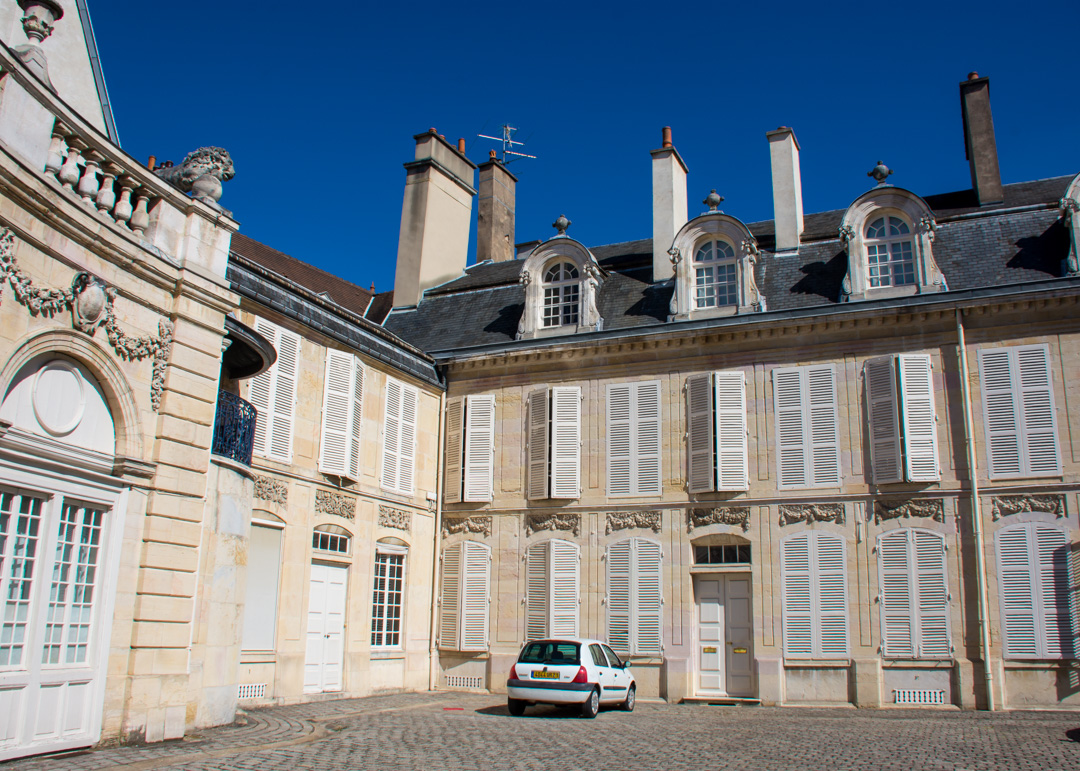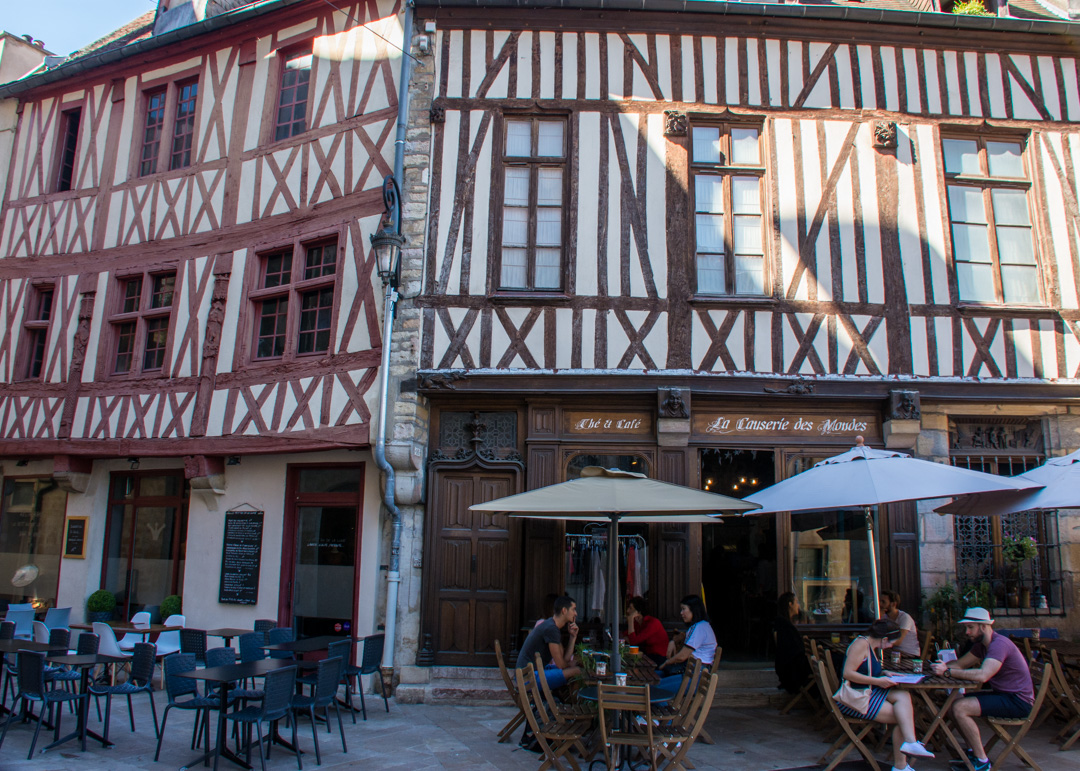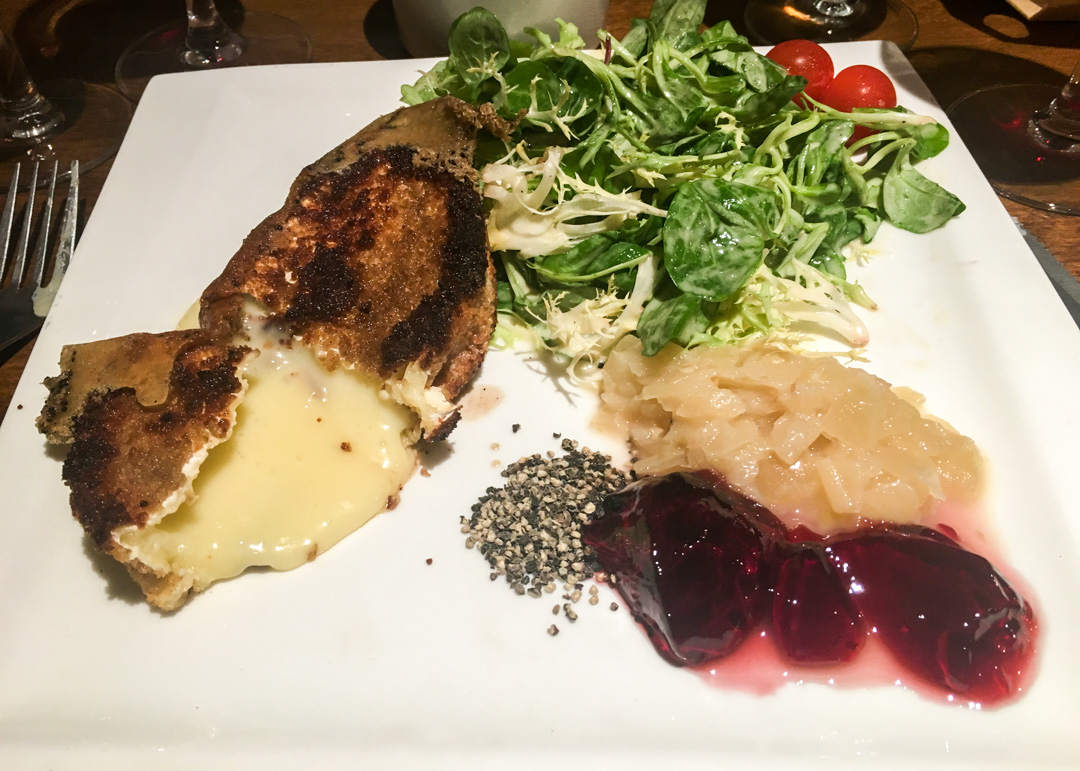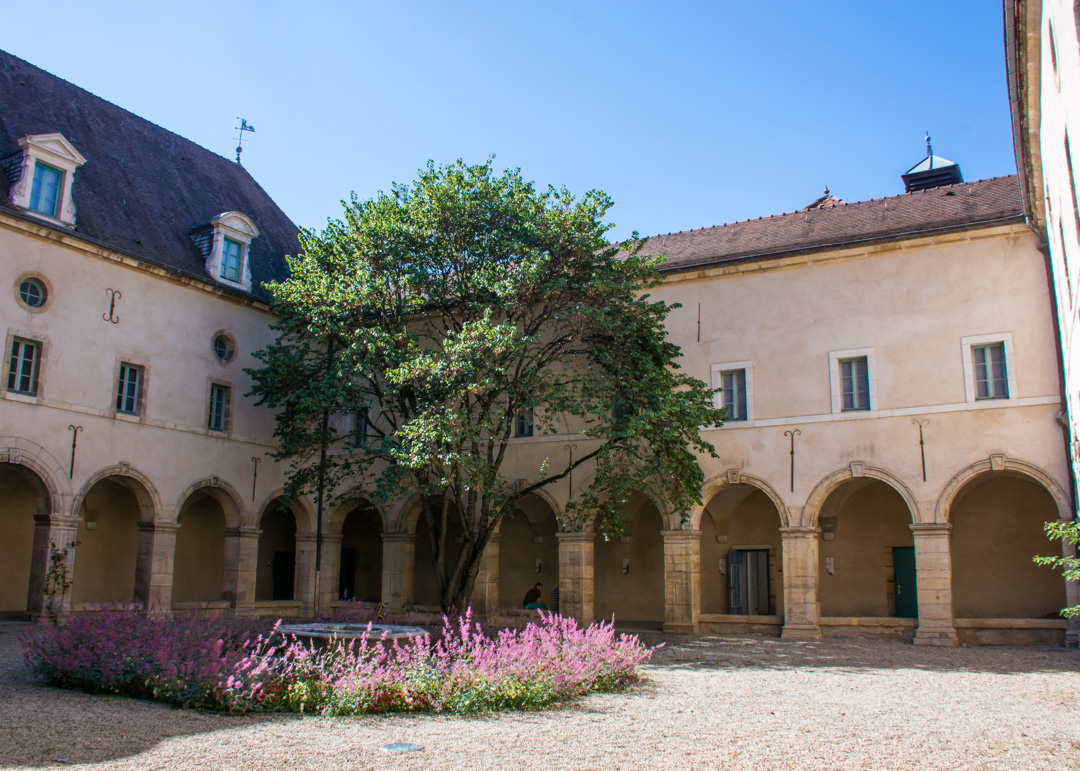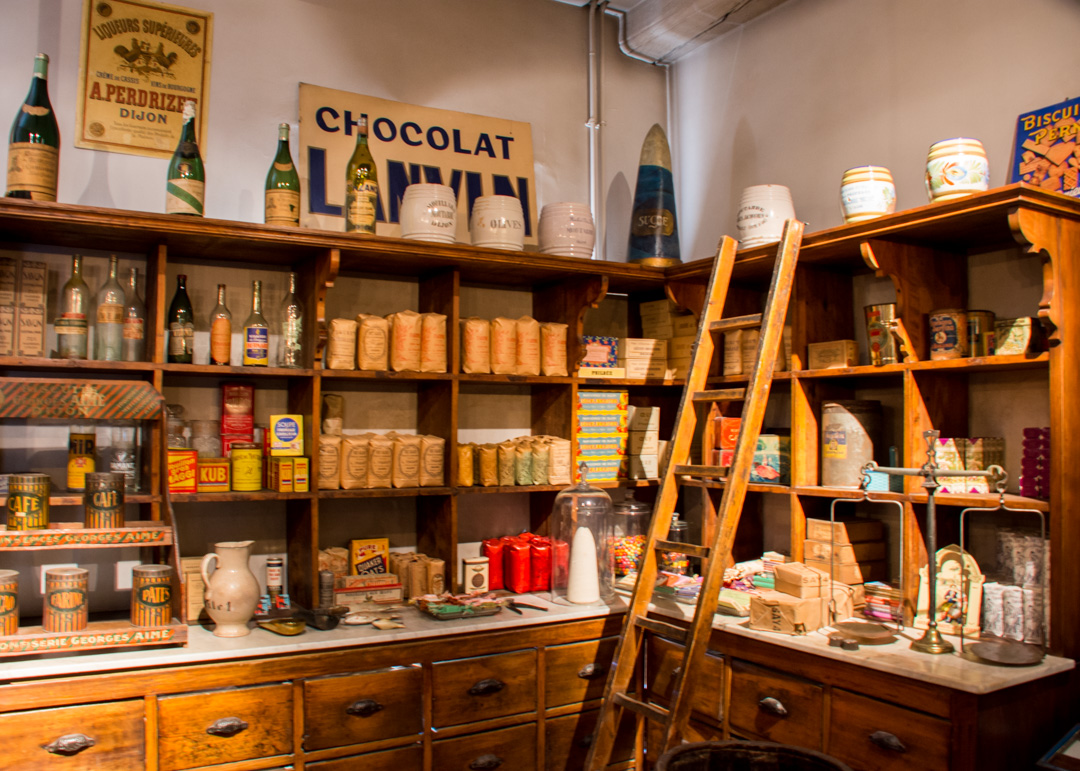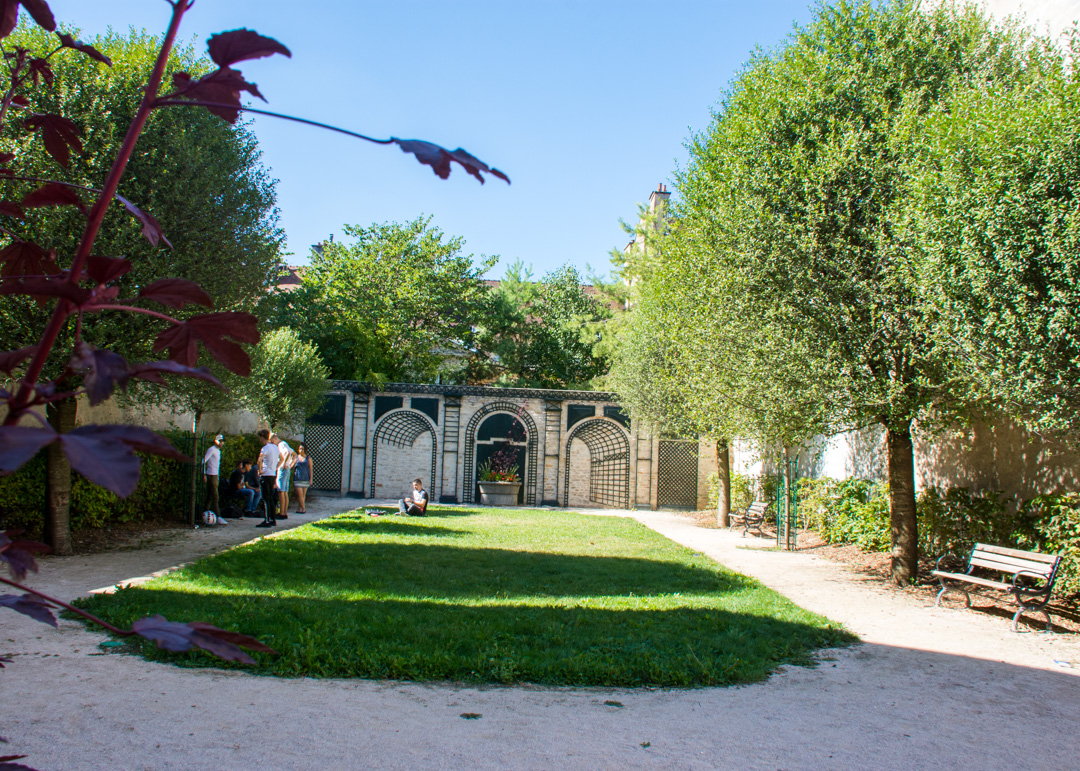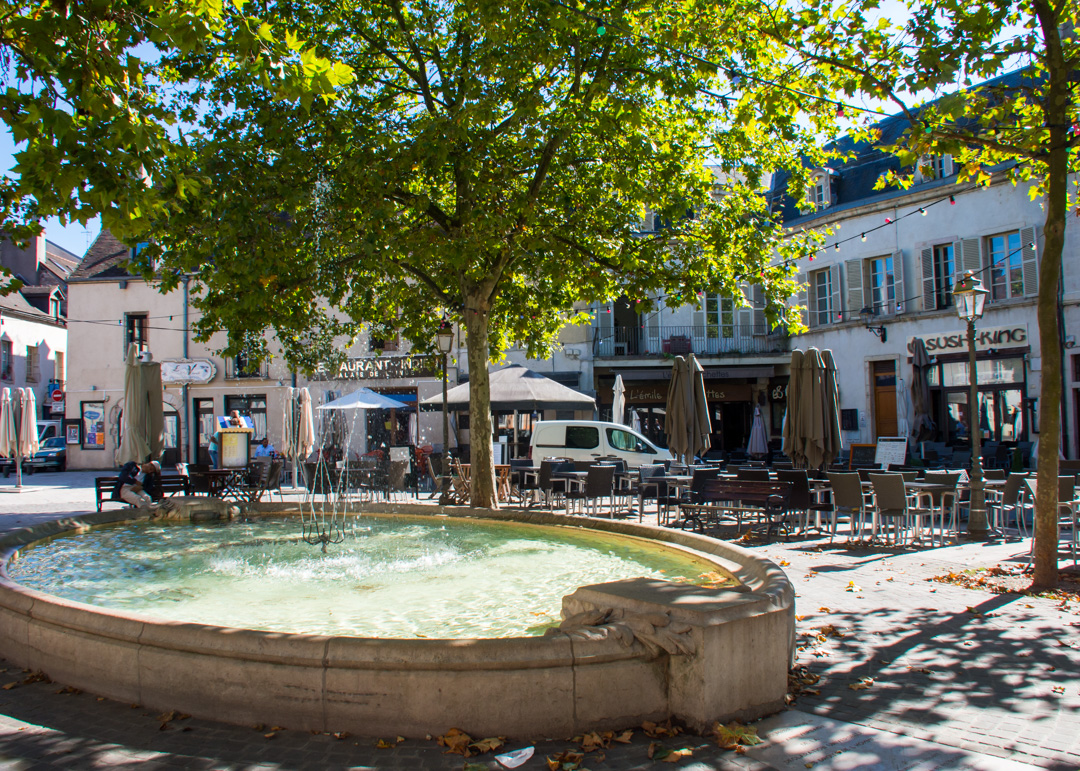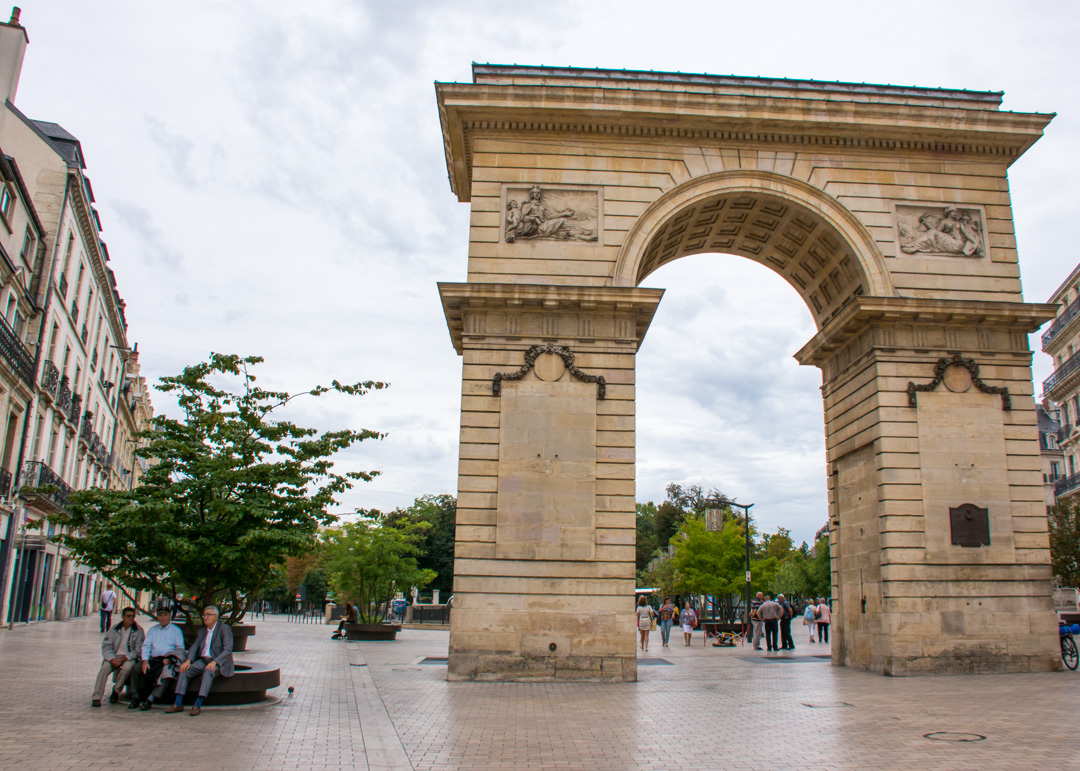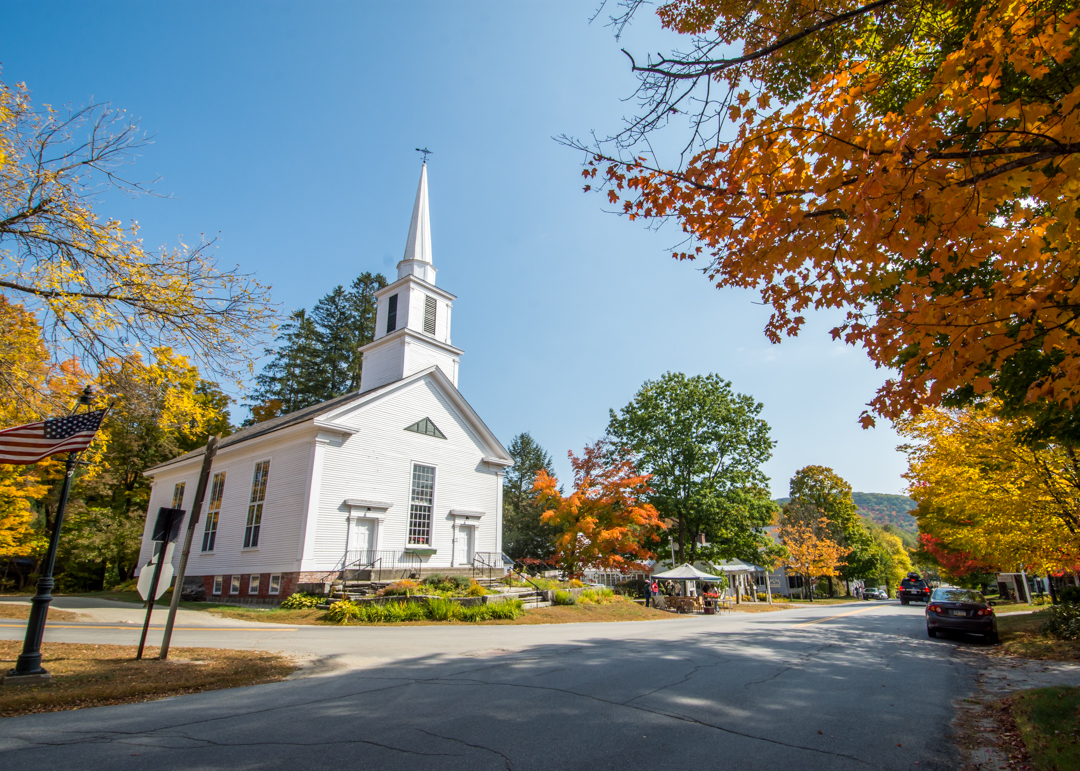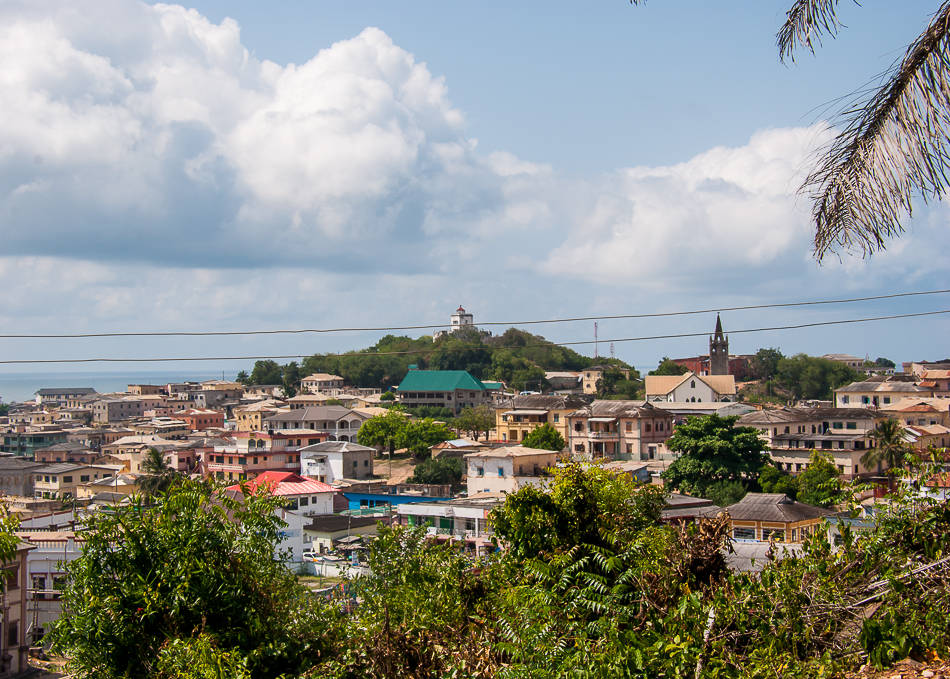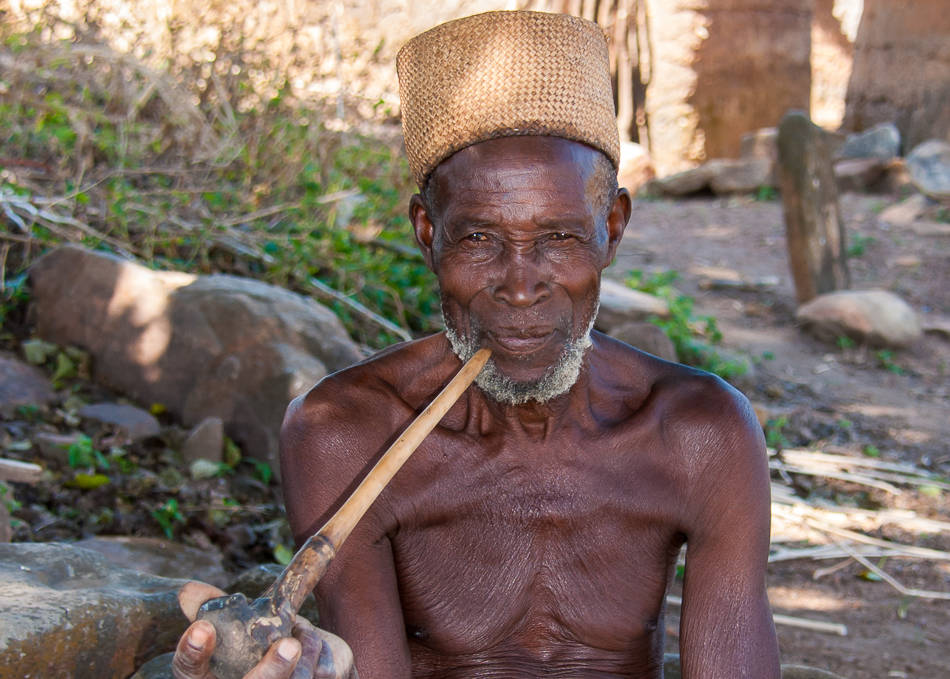The medieval city of Dijon might just be one of France’s best kept secrets. Only a 90-minute train ride south of Paris brings you to a beautiful town at the doorstep of Burgundy’s wine region with a fabled history and a culinary pedigree that extends far beyond its famed mustard.
What I loved most about Dijon is the fact that, despite being a modern regional capital, it has retained much of its historic past and is a real pleasure to walk around. Whether in the old center or the business district, you’ll stumbled upon so many charming buildings, fountains, and urban oasis you’ll never want to take the same path twice.
Always lively with a big student population, the center is filled with casual cafes where locals meet over drinks and snacks like at Café de l’Industrie.
You’ll soon notice some unique markings embedded in the pavement bearing the town’s emblem – a little golden owl! This charming feature is actually showing you the tourists routes in the historical center. Make sure to pick up the map at the Tourist Office of ‘Le Parcours de la Chouette’ (meaning the Owl’s Trail) and you’ll be on your way to see Dijon’s main sights!
Hopefully you’ll be here on one of the Market Days (Tuesday, Fridays, and Saturdays) to see the region’s bounty and shop like a true local. The market hall itself is a beautiful sight of metal and glass and was designed by Gustave Eiffel, the one from the Eiffel Tower fame!
This will surely open up your appetite and thankfully there’s a great bistro right on Market Square from where you can watch the action while sampling the specialties of Burgundy – DZ’Envies.
Escargots de Bourgogne are a must (snails in garlic-herb butter).
And so is the meltingly tender beef bourguignon.
The streets of Dijon are filled with elegant mansions which used to belong to the Dukes of Burgundy and other distinguished owners. The city has the largest amount of buildings which are more than 300 years old and still standing, so walk slow and lift your head up to admire the well-preserved facades, roofs, and gates.
Art Deco also makes beautiful appearances on commercial buildings.
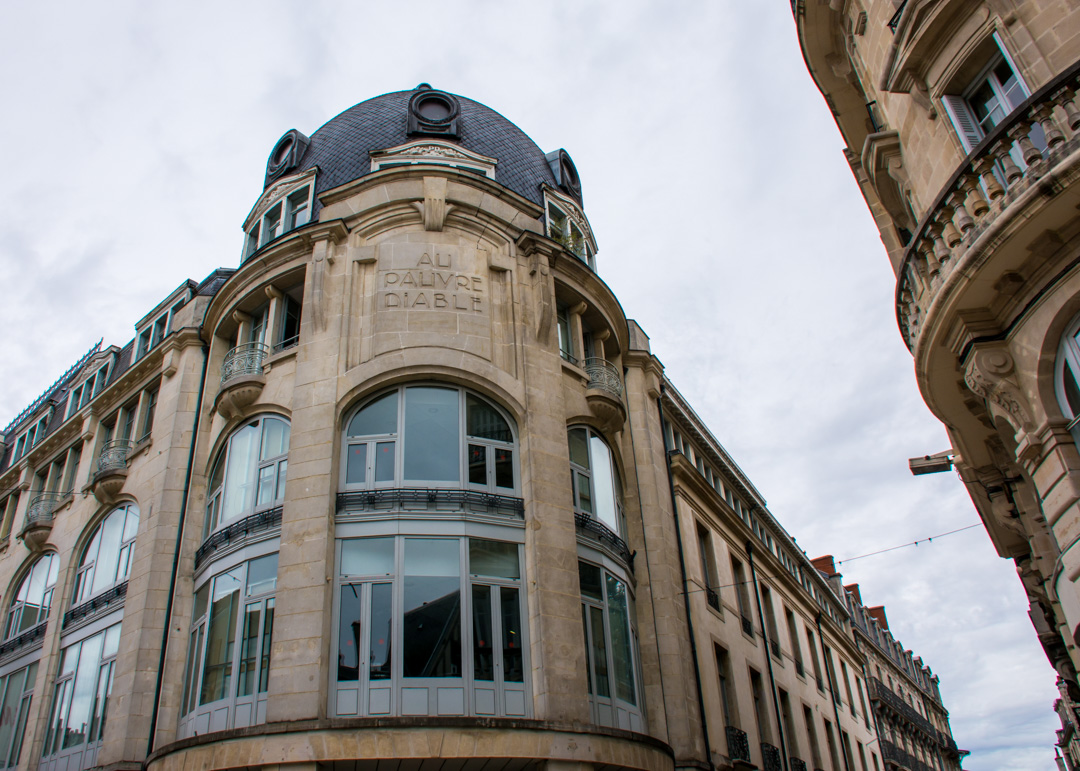
There’s always a crowd in Place Francois Rude which marks the center of the pedestrian area and seems to be the #1 locals meeting spot. Surrounding the carousel you’ll find plenty of casual bars and restaurants to rest your feet and grab a bite with a quintessentially French Village scene unfolding in front of you.
It’s a good occasion to keep on digging into the vast French culinary repertoire and savor some beef carpaccio…
…and sweet chocolate crepes. No one does them quite like the French so we made our fill!
The south side of the weirdly shaped square branches out into numerous streets, but you’ll want to take the curved Rue des Forges to see more of these grand mansions (it’s also where you’ll find the Tourist Office).
Nearby Rue Musette is where you can get a glimpse of the facade of what is considered the “Grande Dame” of Dijon churches – Eglise Notre-Dame.
Also where you can get a very good breakfast from Tartin’Art where wonderful croissants and breads are baked fresh multiple times a day.
While you may be used to its light and flaky rendition found everywhere, try an original ‘Pain au Chocolat‘ in crusty baguette form for a change, it’s as delicious!
The Church of Notre-Dame is a masterpiece of 13th-century Gothic architecture built between 1230 and 1250.
It’s the splendid facade that demands attention though, with its rows of gargoyles presented as grotesque figures.
There’s also a unique clock tower on the roof created in 1382 with charming jacquemarts (mechanical figures that chime the church bells on the hour).
Follow the Owl’s Trail around to find THE famous owl carved on the side of the church. A superstition states that luck would accompany anyone who strokes the bird with their left hand while making a wish, hence why it’s looking so worn out today!
Continue going east of the church into the old Ducal quarter which oozes medieval charm. Stop by Maison Millière, a beautiful house from the 15th century turned into a tea room and restaurant.
French cinephiles might recognize it as it was used during the shooting of the film “Cyrano de Bergerac” with Gérard Depardieu.
Notice the owl perched high atop the roof, and the cat to the right?
Follow any of the streets at the back of the church for some of the most charming wandering around, with narrow cobbled lanes and half-timbered houses wherever you look.
Rue Verrerie is especially quaint with antique stores and the most picturesque glimpse into ‘medieval Dijon’.
It’s a quieter side of the town, perfect for lazily browsing the many shops and sitting at sidewalk cafes for a while.
When you hit Place de la République, you will have reached the northern border of the old town so take a breather and walk back towards the antics district.
Venture into little side streets to see not-too-shabby residential neighborhoods.
Quench your thirst at Chez Bruno, an unpretentious and cozy wine bar favored by locals with a huge selection and tasty charcuterie boards.
Across the street, you’ll find one of Dijon’s best restaurants in a listed historical building – La Maison des Cariatides. Look at the mysterious human figures carved into the ornate Renaissance facade before going inside.
The Michelin-star restaurant offers a delectable tasting menu (no à la carte here) of fresh and innovative fare with every ingredients sourced from nearby farms.
Their version of fried whitebait and mozzarella sticks…
There’s still plenty to see around so digest while making your way back to the center, stopping by Place du Théâtre to see the Public Library/Museum of La Nef…
…and making your way a block over to the end of Rue Verrerie for a lovely example of a house with a turret.
Turn around and you’ll find yourself amidst the peaceful setting of the Square des Ducs, behind the famous Palais des Ducs de Bourgogne. The massive building is the city’s centerpiece and holds the Fine Arts Museum among other things.
Take a peek inside to see one of France’s oldest and most important art museums, especially the Salle des Gardes where the tombs of the Dukes of Burgundy rest among exquisite Gothic altarpieces.
Make sure to also book a visit from the Tourist Office to the tower of Philippe le Bon. After climbing the 316 steps to the roof, you’ll be handsomely rewarded with the best views in all of Dijon.
Look out onto the expansive Liberation Square, the heart of Dijon, and plan your next stroll.
Liberation Square is actually in the shape of a half-circle and considered to be the historic centre of Dijon.
Lavish buildings, restaurants and gourmet shops surround the old place.
You’ll eventually venture out through one of its many archways but first stay a little while and sit at a restaurant to take in the view, the fountain, and the crowd strolling by.
Brasserie B9 is a good option for lunch and you’ll have prime spectator seats with your meal.
The treasures of Dijon continue south of the square with the same impressive amount of beautiful churches, gardens, palaces, museums and gated town houses.
If you find yourself hungry in these parts (or not in which case you should still stop and eat, it’s part of the visit), make your way to Le Petit Roi de la Lune, only two blocks south of Liberation Square.
It’s the definition of comfort with local wines and homemade food the likes of which you’d love to be able to get back home. Keep on checking things off the local food’s list by ordering the fried camembert, you won’t regret it. Deep fried French soft cheese with a salad. cooked pears and blackberry jelly…I’ve had worst!
One more quick museum visit if you have time would be the Musée de la Vie Bourguignonne (Museum of Burgundian Life). Housed in the cloister of the former Bernardine convent, the museum offers a pretty good idea of everyday life in Dijon from the 18th to the 20th century.
Walk through an array of made-up rooms with household items, costumes and furniture recreating the local life from not too long ago.
There are many more museums, buildings, and churches to see with such a long history, though just walking aimlessly around is truly an ideal pastime in between the heavy meals that are central to any visit to Dijon. Look out for the numerous intimate parks and plazas, discover little cafes, and feel like a local for a while, it’s immensely pleasurable!

